The BEST Banff winter photography guide
THE BEST BANFF WINTER PHOTOGRAPHY GUIDE
If you’ve come looking for more information on Banff in winter then you’ve come to the right place! Read through this Banff winter photography guide and you’ll be well on your way to organizing yourself a great trip and capturing those dream winter photos of the Canadian Rockies that you’ve been imagining.
In this guide you will discover why winter can be the best season for landscape photography in the Canadian Rockies, you will be able to note down points of interest from our quick reference Banff winter photography location guide, find out what to expect weather wise, get suggestions on what to bring, where to stay, and receive additional tips on things to do in Banff along with so much more.
But first take a peek at our Banff winter photography gallery below for inspiration on what’s in store for you on your photography trip!
8 reasons why winter in Banff is better than the other seasons
1. WINTER LIGHT
In winter the light is always at a low angle throughout the day in the Canadian Rockies so it never gets too harsh. The sun rises in the South East and sets in the South West staying below 20 degrees above the horizon from mid November until the end of January.
As a landscape photographer you can shoot all day in these conditions as there is always some beautiful side light to be found. This low angled light is complemented by great clarity in the air, regular winter atmospherics in the form of highly changeable mountain level cloud giving rise to halos and iridescence, and soft pastel colour schemes especially around twilight.
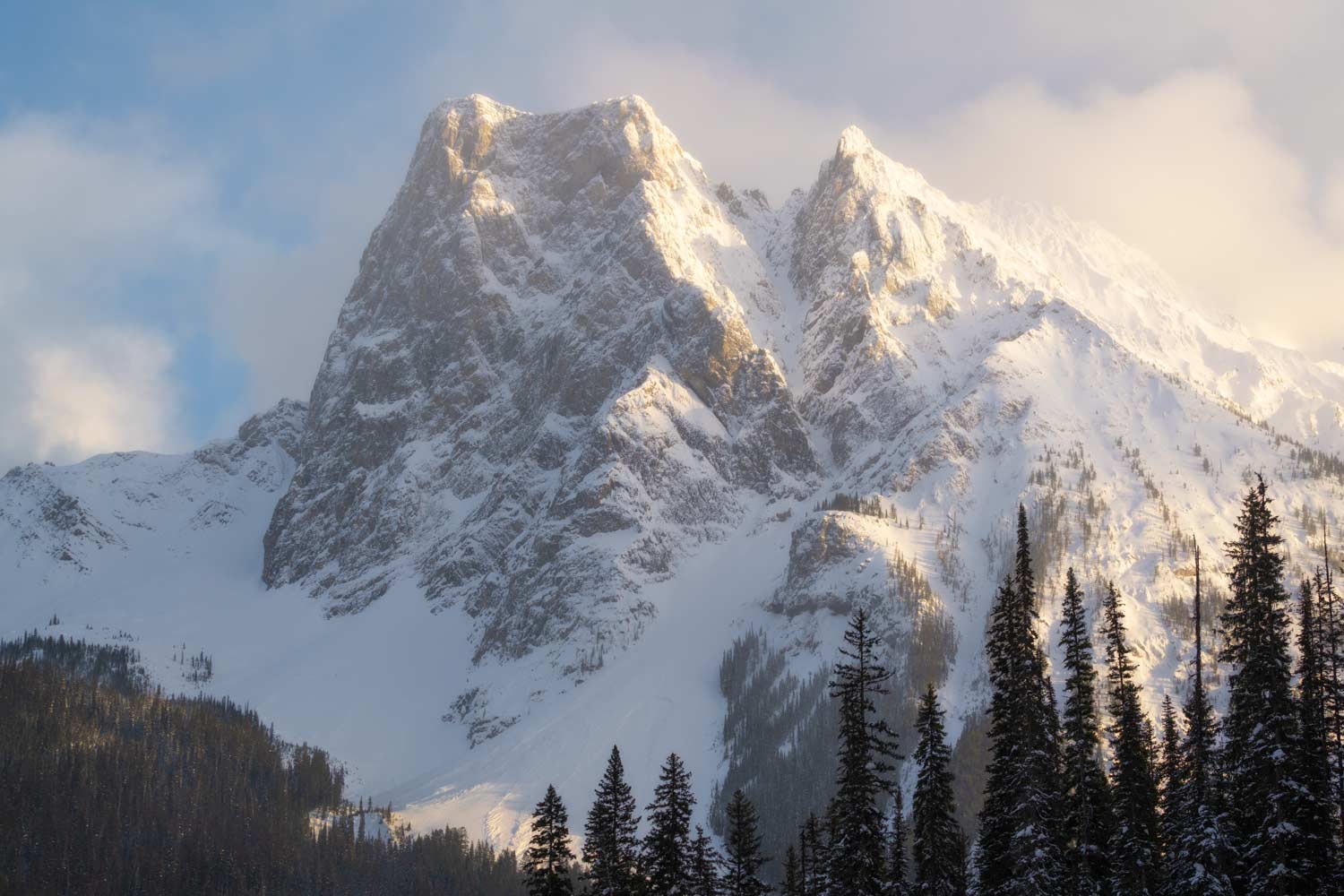
So with the light setting the stage it brings us to the next reason why winter is the best season in Banff;
2. WINTER SIMPLICITY
A blanket of snow on the landscape really helps to remove a lot of the distractions that exist in the other seasons. Twigs, messy leaves, the predominantly green and brown colour palette of the forests and those fine mountain textures all start to melt away. This gives you more negative space to work with. Isolating elements and finding flow in your frame becomes a breeze raising the quality of your landscape photographs with little to no extra effort.
The snowy blank white canvas is also excellent at taking on any reflected colour hues in the sky allowing for colour matching throughout your frame especially at sunrise and sunset.
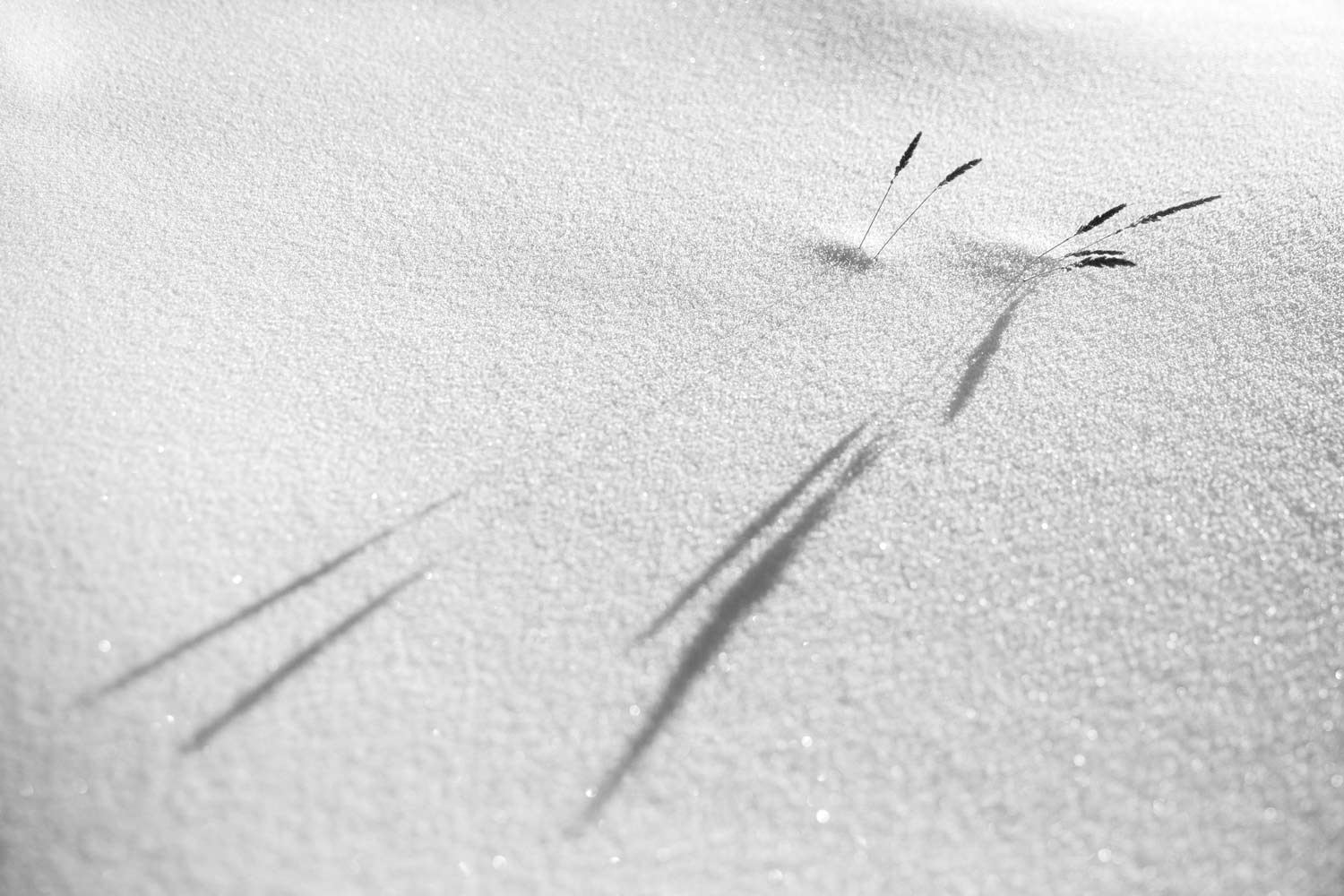
To take full advantage of this winter simplicity it is key to keep an eye out for our next reason that winter is the best season in Banff National Park;
3. WINTER WONDERLAND POTENTIAL
Fresh snowfalls are like gold so give up that snow shoveling side gig as quickly as you’re able. I did. One thing about winter in the Banff area is that it’s not always entirely a winter wonderland as you might expect when doing your research. In fact it is regularly windy so the closer you are to the edge of the mountains the more bare and UN-winter-like things can get. Heading in the other direction towards Lake Louise and the continental divide the snow tends to stick on the trees throughout winter and you get a more consistent winter wonderland look.
So keep your eye out for the fresh snowfalls in the Banff and Canmore areas and go out shooting immediately once the squall clears out. Otherwise head to Lake Louise and the Icefields Parkway for the full winter look and feel.
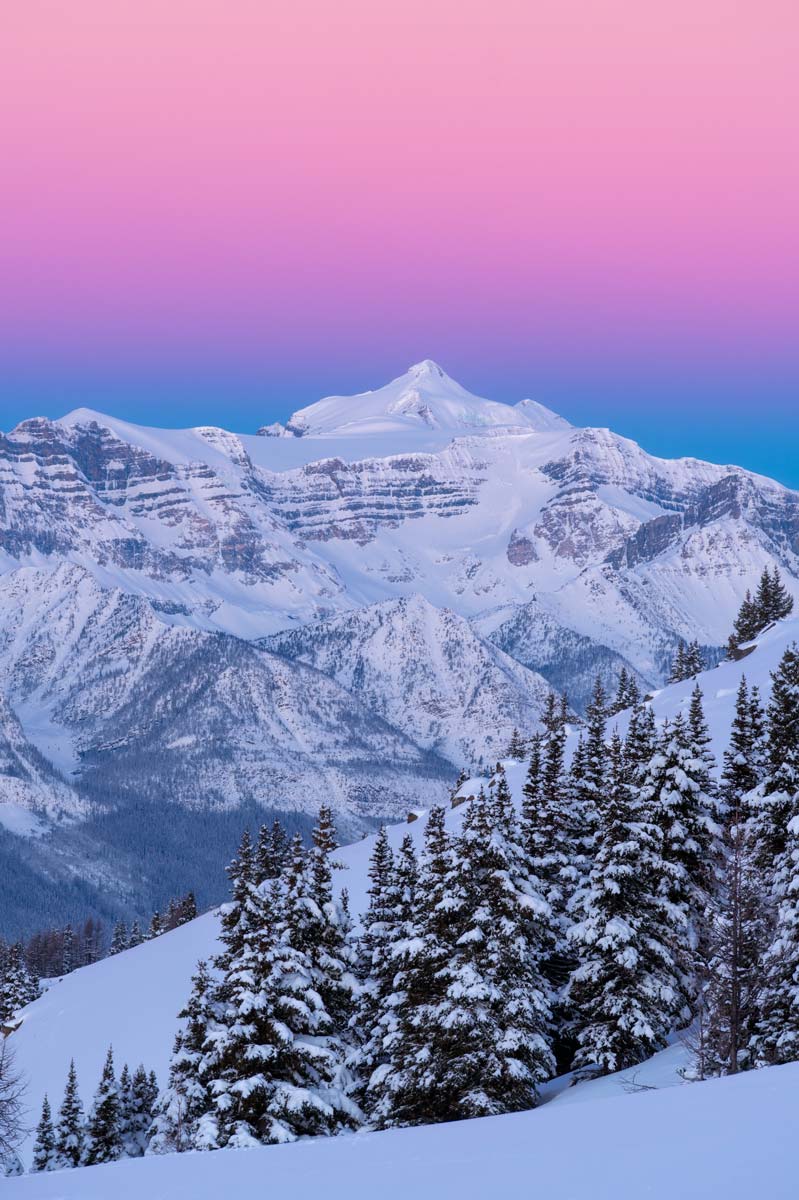
Average snowfall days clock in at around 10 days of the month from December-February so about every 3 days. If it’s not snowy have no fear, you’ve got options. Especially photographing the lake ice that the strong winds have probably blown clean & uncovered for you, which is our next reason why winter in Banff is like no other;
4. THE ICE
The ice is a mecca for interesting foregrounds in your photographs, especially when you can safely access the lake ice once it has frozen solid which is different for different lakes. Make sure that you know how to assess a safe ice thickness or go with somebody that does. Methane bubbles trapped in ice in stack formation are a must photograph, especially at Abraham Lake. It is also amazing to see the giant ice blocks, cracks, & details that are often alongside the more famous bubbles. We organize both private and small group photo tours to Abraham Lake every winter.
If you can’t go on a lake, sticking to the edges will also allow you to capture ever changing patterns and features of the ice. This is especially so in Novembver before the lakes properly freeze but are rimmed with a coating of ice. Add in some wind and this ice coating gets blasted onto everything providing a wild icy shoreline spectacle.
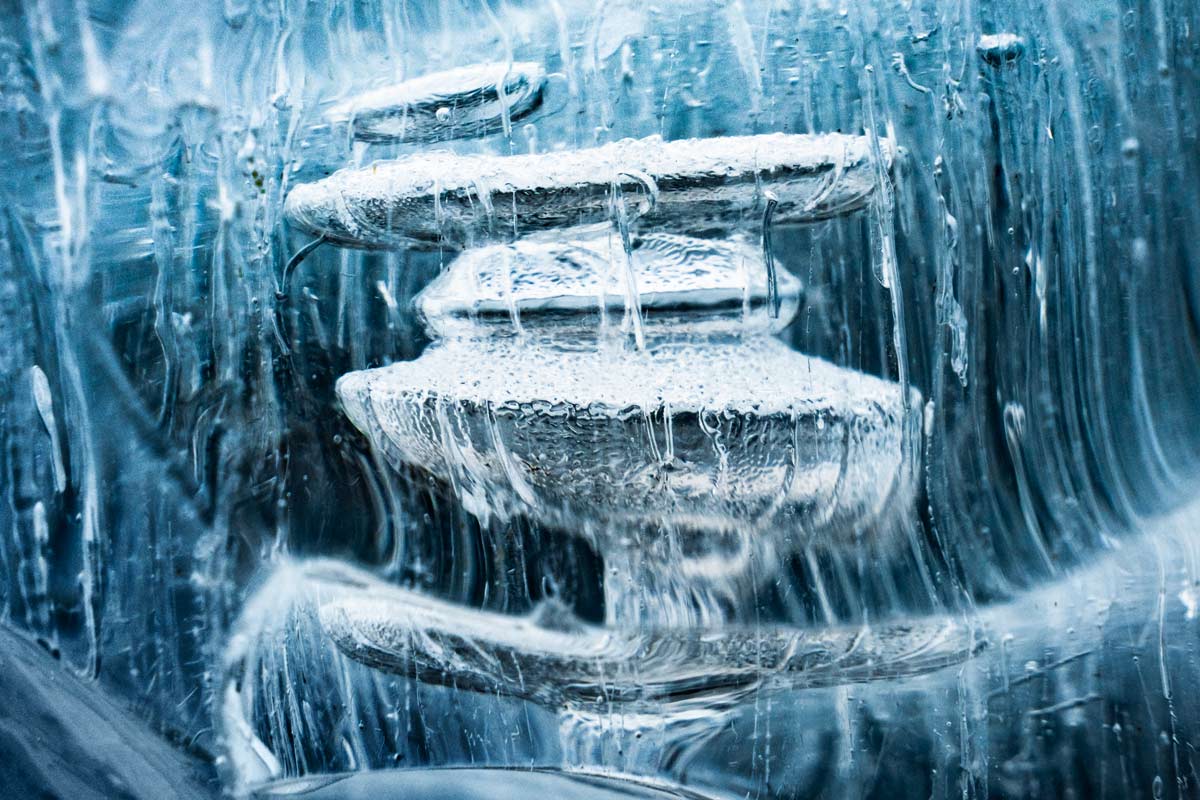
We also have many ice waterfalls in the Canadian Rockies and some great places to safely see and photograph those are at Johnson Canyon, Marble Canyon & Grotto Canyon. Also, hoar frost flowers develop during bone chilling cold snaps, one of the next reasons why winter is the best season for photography in Banff, It’s temperature extremes;
5. POLAR VORTEX'S & SNOW EATING WIND
Winter temperatures fluctuate massively between -40C (-40F) and +5C (41F). It can be colder or warmer than that too. Where photography is concerned it is worth rugging up and going out to shoot once the temperature gets well below zero or during a ‘polar vortex’. A polar vortex is a low pressure system parked up over the north pole pushing air southward towards us here in the Rockies. At a certain point frost flowers begin forming and steam rises beautifully off the much warmer glacially fed rivers. Both great elements for your winter photographs.
At the opposite end of the spectrum, during a Chinook wind we get a quick rise in temperatures which can go well above zero degrees even in January which brings with it a cloud bank that sits off the edge of the Rockies called a Chinook arch and associated high wind formed lenticular clouds. Always shoot sunrises and sunsets during a Chinook wind event, they have all the ingredients necessary for colourful clouds to materialize! The indigenous call the Chinook wind ‘snow eater’ and you can see in the photograph below how bare the mountains have been scrubbed by that wind.
These temperature changes keep things interesting. Be safe during both extremes. Frostbite is a real danger on one hand (hopefully not both) while breaking through weak lake ice is a real danger on the other hand when it warms up quickly.
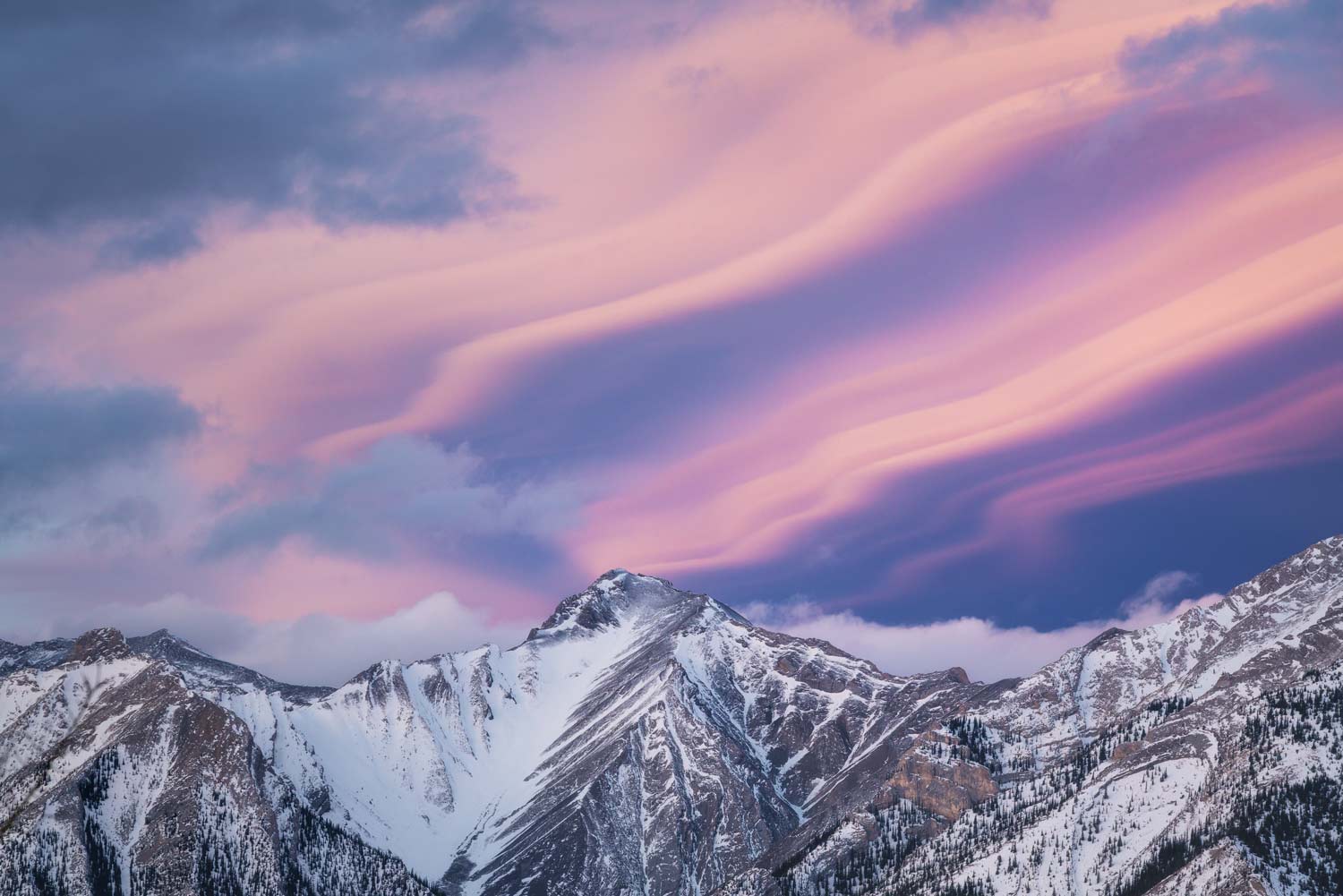
6. THE LAKE LOUISE ICE MAGIC FESTIVAL
Normally scheduled for the last two weeks of January the Ice Magic festival in Lake Louise is a must see, especially the ice sculptures that have been professionally carved into amazing displays which are awesome to photograph!
I would recommend photographing them at twilight to get detail in the mountains behind them as well as in the lit up ice sculptures. A slight darkness really helps the features pop out from their surroundings but don’t wait until it gets too dark because the light becomes too overpowering to capture easily with the stars and mountains behind without doing complicated exposure blends and flare removal.
The ice castle, ice bar and skating rinks on the surface of Lake Louise are also in full effect for the month and are great activities. We have scheduled our Lake Louise ‘Mid-Winter Magic’ Landscape Photography Workshop to be based in Lake Louise around festival time so that participants may be able to experience it around our activities.
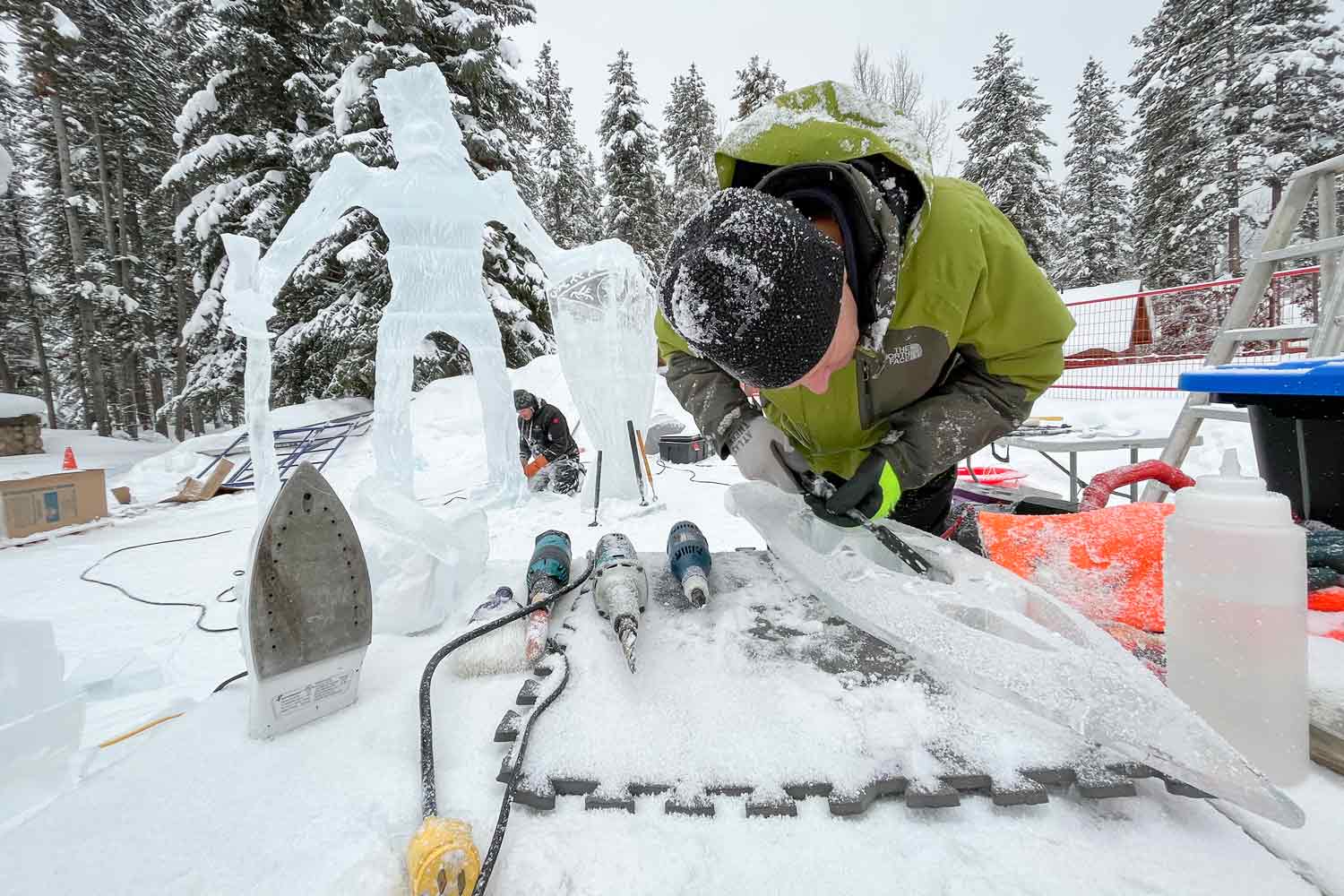
7. REDUCED CROWDS
Winter time means less visitation to Banff National Park outside of the ski hills which are slamming busy on the weekends. The ice magic festival also gets busy during the weekends of its run but it still pales in comparison to summer time. There’s nothing better than hearing wolves howling in the distance on a quiet winters day photographing in Banff National Park, or not having to jockey for position to photograph at an iconic viewpoint.
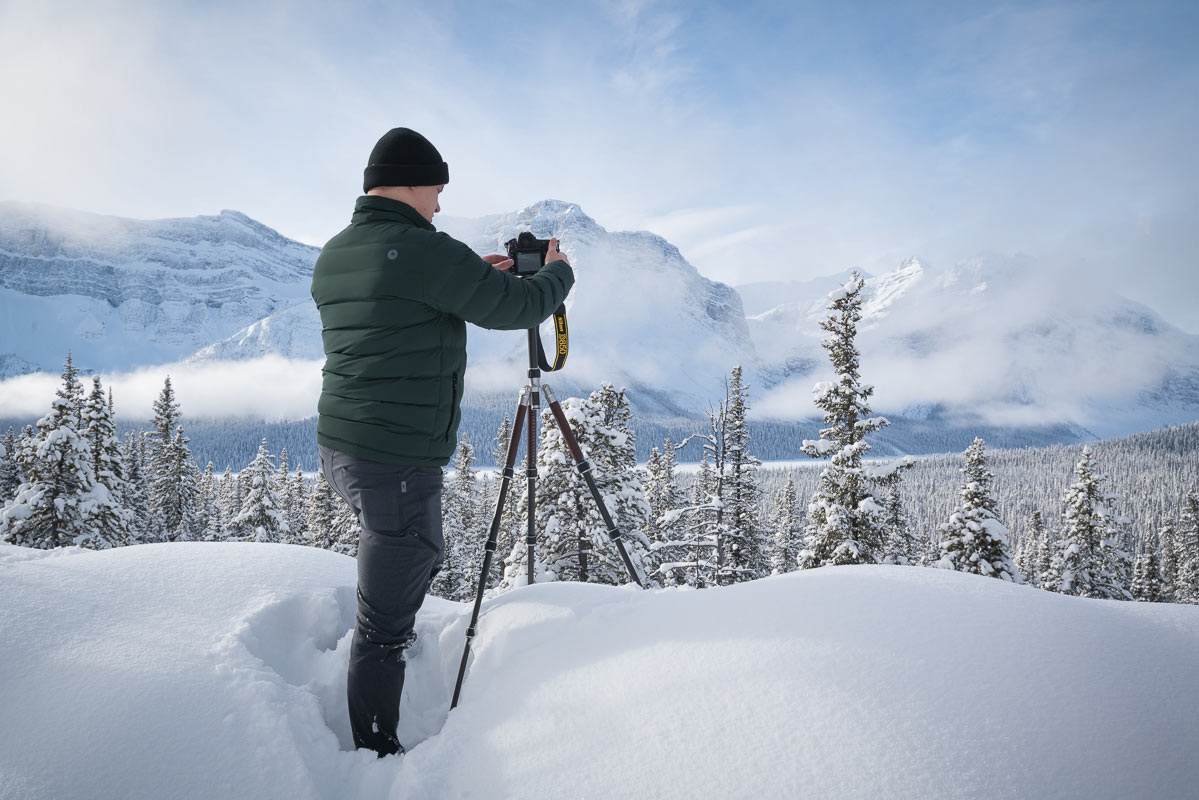
It is so peaceful in the park mid week in winter time and a huge reason why winter is the best season in Banff! If you want the place completely to yourself then head out for some of the crispest stars you’ve ever seen on a night photography workshop after dinner time, our final pro in this Banff winter photography guide;
8. NIGHT PHOTOGRAPHY AT A REASONABLE HOUR
Our final reason why winter is the best season for photography in Banff and the Canadian Rockies, the night photography opportunities are at a reasonable hour! Right after dinner time you’ll have plenty of time to photograph a few locations before getting a fantastically long sleep before your sunrise photo shoot. You don’t get this kind of luxury in any other season in the Rockies. You have to lose sleep and make sacrifices in those seasons as the daylight hours are much longer.
Not only that, the air is clear and crisp and moonlight or starlight reflects brightly off the snow during a clear night. The milky core returns to our latitude by mid February right before dawn and it is angled horizontally during this time which can look incredible lying across the tops of the peaks.
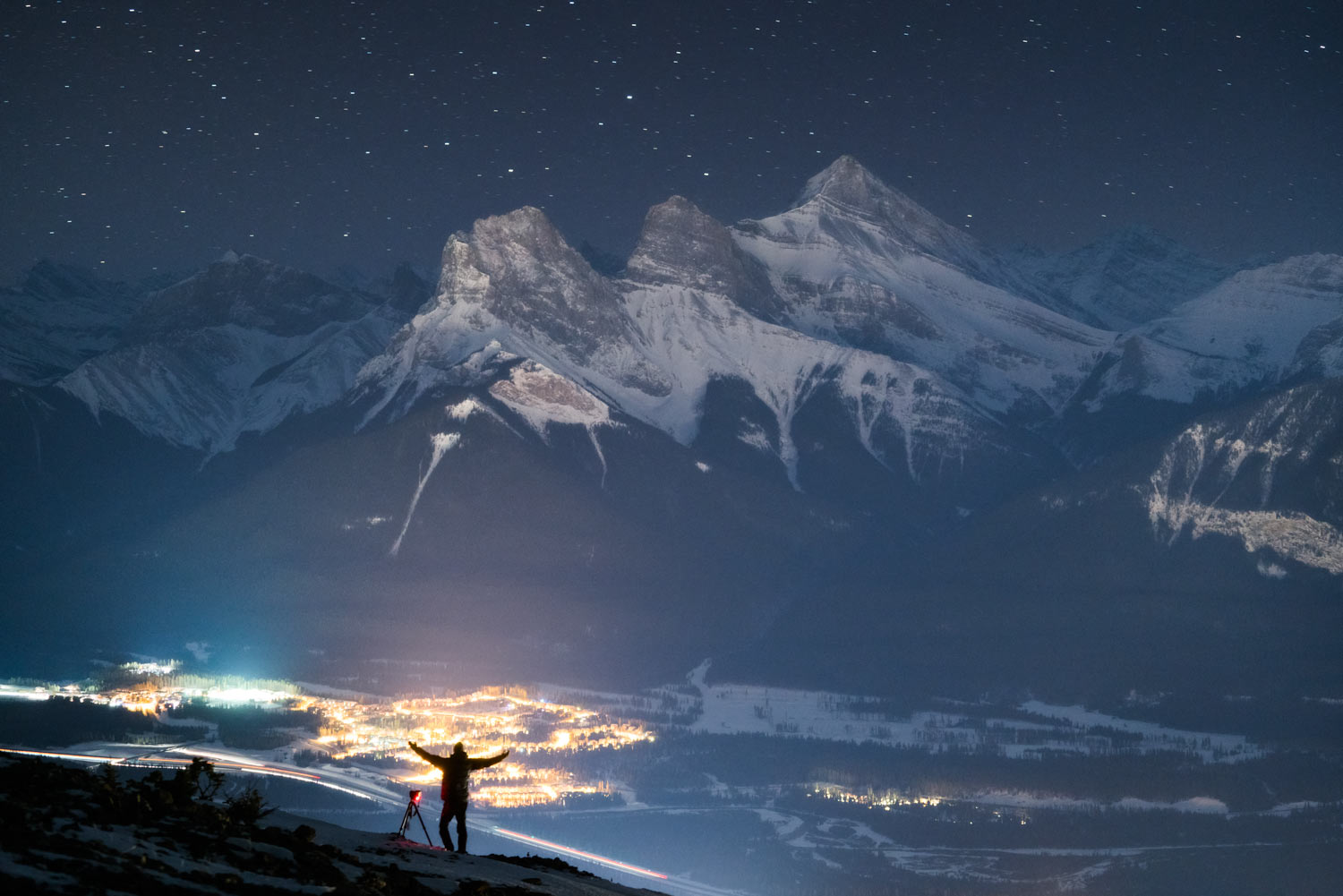
You have to visit Banff in winter time for photography and we hope that we’ve convinced you to book your next trip! Find out which locations we would recommend to visit on your winter photography trip to Banff National Park below.
A quick reference photo location guide
Click on the cards below to see various recommended locations for winter photography in the Banff area. These are more common viewpoints and easily accessible areas, and must sees for first time visitors.
- Two Jack Lake
- Vermilion Lakes
- Norquay Lookout
- Lake Minnewanka
- Banff Gondola / Sulphur Mtn
- Lake Louise
- Morant’s Curve
- Castle Mountain
- Lake Louise Gondola
- Emerald Lake (Yoho National Park)
- Bow Lake
- Peyto Lake
- Waterfowl Lake
- Howse Pass Viewpoint
- Abraham Lake (David Thompson Hwy)
- The Three Sisters (Canmore)
- Numa Falls (Kootenay National Park)
- Marble Canyon (Kootenay National Park)
- Columbia Icefields (Jasper National Park)
- Spray Lake & Engadine Lodge area (Kananaskis)
Behind the shot
As part of the Banff winter photography guide we thought we’d include a look behind a shot. Here’s a winter sunrise in Deadman’s Flat on the Bow River looking at the side of the Three Sisters. Read our thought process and technical explanation below the images.
LOCATION CHOICE & TIMING
I chose this location as the moon was setting right before sunrise straight ahead down this waterway. Moments before I took this shot I had photos of moonlight reflecting off the ice fingers in the foreground. The sunrise was just a bonus!
COMPOSITION
I needed to invert the tripod centre column to get low but not too low so as to keep the reflection of Little Sister in the mid ground. Big S shaped lead in line with the ice. Slightly off centre focal point in top right quadrant (the light on the peak) in the background to pull the eye back across the frame from that S shaped curve in the lower left quadrant, giving balance.
TECHNICAL CONSIDERATIONS
I put the lens as close to the foreground ice as possible to make it appear as large as possible, but was careful not to exceed the minimum focusing distance of the lens. Now that I was close and wanted detail throughout the frame focus stacking was necessary. It took 6 frames to cover full focus. Finally I tilted the camera up on the final frame (the one focused on the mountains) to capture another frame for the top of the cloud drift, stitching that top 5% of the frame in post. A tiny aspect but everything counts!
What to pack
We want to cover just a few recommended items that you pack – both camera gear and outwear – in our Banff winter photography guide to make your trip just that bit better.
CAMERA GEAR ACCESORIES FOR WINTER
- Extra batteries! – Especially if your camera is a crop sensor (APS-C) model where batteries drain unbelievably fast during a cold snap in winter time.
- Prepare your tripod – install spikes on the tripod feet. You will need these to grip any icy surfaces, especially slanted ones like you get at Abraham Lake later in the winter. Also make sure you have areas covered on the upper tripod legs for holding so your hands don’t get cold. Use hockey tape. Foam works well too from the hardware store if your tripod doesn’t come equipped with padding.
- A foam pad to kneel or sit on. This is so key in winter time for extra comfort out on location if you will be spending any amount of time at a spot.
- A rechargeable battery operated hand warmer like those made by G-Tech apparel. It clips around your waist and helps having the ability to warm up your hands and maintain dexterity on winter shoots.
- An L-Plate for your camera. This goes for any season really, but that bit less fiddling with a tripod head goes a long way in winter.
- A telephoto lens. Our favourite lens to use in winter time in the mountains. This is going to allow you to pick apart the landscape and capture images that are uniquely your own so much easier than when using a wide angle lens in winter. This is because you cant often access areas with your feet in winter due to avalanche danger, deep snow or thin ice.
SUGGESTED WINTER OUTERWEAR
- The warmest down jacket you can get your hands on. Be a Michelin mascot even if it is -5C. Standing around for photography gets cold quick even in nice temperatures.
- Insulated winter boots. Your feet will absorb the cold from standing around on the snow and ice so get a boot rated to -30C or better. Add in toe warmers on the coldest days.
- Ski pants on the coldest days. The extra insulation on top of mandatory thermal wear really helps.
- Sunglasses with UV protection. All the sunlight bouncing around off the snow can damage your eyes on a longer outing.
- A face covering of sorts. This could be a neck warmer, scarf, a bandana or a mask. It’s s especially helpful when its windy in winter to keep your face from freezing.
Things to Do in Banff - additional tips
SKIING
Skiing in the Canadian Rockies is renowned for the light powder snow because it is so dry here on the Alberta side of the continental divide. The ski resorts you can enjoy nearby include Ski Louise (vast, complex terrain/photogenic), Sunshine Village (photogenic/beware the flats if you’re a boarder), Mt Norquay (Night skiing on Fridays), Nakiska Ski Resort (Family friendly) & Marmot Basin (Amazing beginner terrain).

HOT SPRINGS
It was the discovery of hot springs that brought about the formation of Banff National Park in the beginning as a hot springs reserve was established around the Banff townsite. You can enjoy more than just the Banff Hot Springs during your visit. Head over to Kootenay National Park and enjoy the larger Radium Hot Springs as well. The hot springs are even better the colder it gets!
THE GONDOLAS
It is hard to get up high in winter time so we definitely recommend a visit to the top of the Banff Gondola. The mountain layers and light are much more able to be captured from up high. Make sure to bring a telephoto lens to take full advantage. Our photography workshop in November includes a trip to the top!
Another option is the Lake Louise winter sightseeing gondola but you will be surrounded by skiers and boarders so it isn’t as good of an experience for photography as the Banff Gondola. Worth a look though. The Lake Louise area is stunning.
Also from early January onwards the Norquay ski resort offers lifts up to their restaurant which has viewing areas so you could consider that too and bundle dinner in with a shoot!
DOG SLEDDING
One final winter time activity that we haven’t experienced yet ourselves is dog sledding. It would be a great thing to do while you are in the area in winter so we’ve included it in our Banff winter photography guide. There are outfits operating out of Lake Louise (Kingmik Dog Sled Tours) and Canmore (Howling Dog Tours) that offer great dog sledding experiences.
Our winter accommodation recommendation
‘Baker Creek by Basecamp’ is our recommendation for accommodation while staying in Banff for a winter photography trip or otherwise. It is quiet & secluded yet central to everything only being 10 minutes from Lake Louise down along the Bow Valley Parkway. Ice skating, snowshoeing and fire pits all readily accessible are some of the highlights. Bring food with you or plan to eat in Lake Louise. Take a look at some pictures from their cozy accommodations below.
If you plan on doing less relaxing and more photography, only needing a place to rest your head in between shoots, then we recommend the ‘Lake Louise HI Hostel’. It is a more affordable option, has a brilliant on site restaurant, and a variety of room configurations.
What about winter snowshoeing/ice walks?
If you want to find more unique angles of the Banff area in winter then one way is by doing some short snowshoe or ice walk adventures. This might sound weird and intimidating but it isn’t, and bringing your camera gear along with you in your backpack is easy with either snowshoes or ice cleats attached to your winter boots.
There are many places to rent snowshoes and ice cleats in the Banff area like ‘Snowtips-Backtrax’ in Banff, ‘Wilson Mountain Sports’ in Lake Louise or ‘Gear Up’ in Canmore to name just a few. Make sure to get poles with your snowshoe rental as you will need them for balance in deeper snow.
Some of the best locations to explore are:
- Chester Lake Trail in nearby Kananaskis (often packed down with no snowshoes necessary but we would recommend still taking them as it’s likely you will want to roam around and find shots off the packed path too).
- Marble Canyon in Kootenay National Park (you might need either ice cleats or snowshoes depending on how much snow there has been)
- Emerald Lake Loop in Yoho National Park (the back of Emerald lake is an absolute treat for winter photography)
- Island Lake along the Bow Valley Parkway (this location would be best to explore with a guide as it is all off trail and snowshoes are essential. Visit it with us!).
- Peyto Lake shoreline along the Icefields Parkway (this location is also best to explore with a guide as you should not access the lake from near the common viewpoint but rather via a small pull out further along the Icefields Parkway in order to avoid any avalanche danger*. This parking spot may or may not be accessible due to snow levels. Visit it with us!)
*You should make sure that you are never in avalanche terrain when out on the snowshoes so if you are not sure then find out first from somebody with local expertise, and don’t go if you are in doubt, or hire a guide.
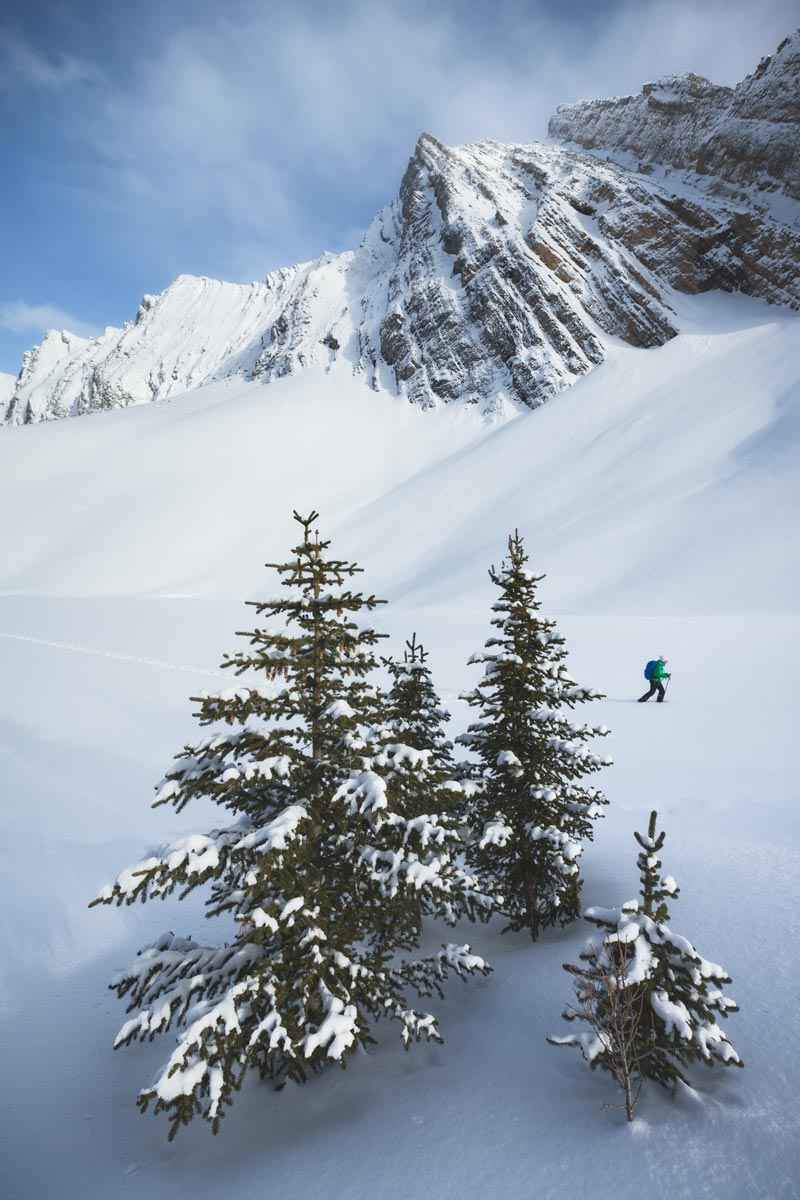
Safety Tip - Check the tires on your vehicle
When renting or driving a vehicle in winter in the Banff area make sure it has the mountain & snowflake symbol on the tires. These are true winter tires. The M+S (Mud and Snow) are all season and not as good or as grippy. You will need to request this from the car rental company as they don’t often come standard. They are essential if travelling on the Icefields Parkway in winter time and for better safety overall.
Also, carry an emergency preparedness kit in your vehicle in case you break down in cold temperatures or in areas with no cell service.

Wrap up
Thanks for reading our Banff winter photography guide! Tell us in the comments below what you think of landscape photography in Banff in winter time or if you have anything else to add.
Don’t hesitate to contact us if you have any questions about your winter visit or if you would like to book a photography workshop or tour in the area. We look forward to hearing from you!
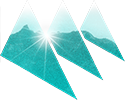


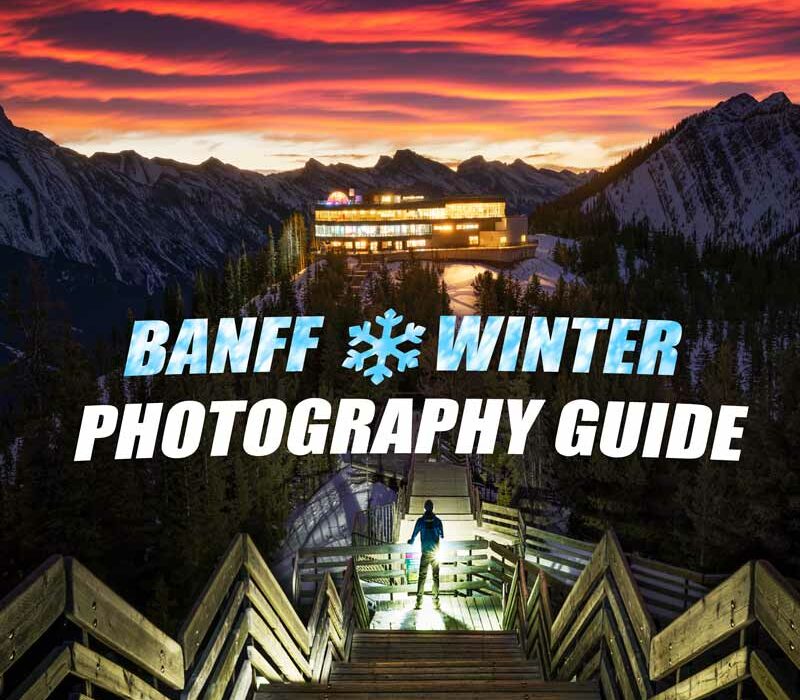
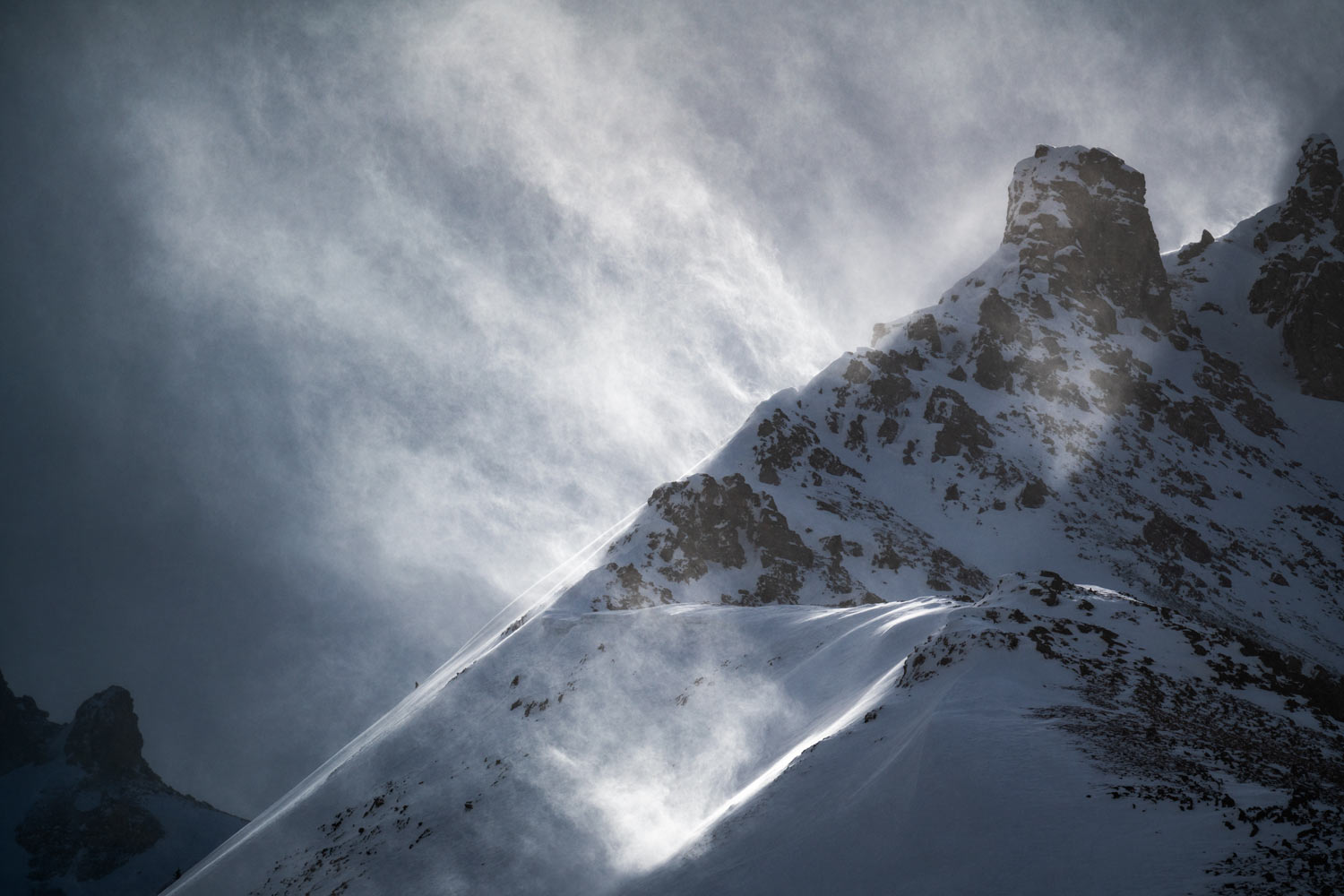



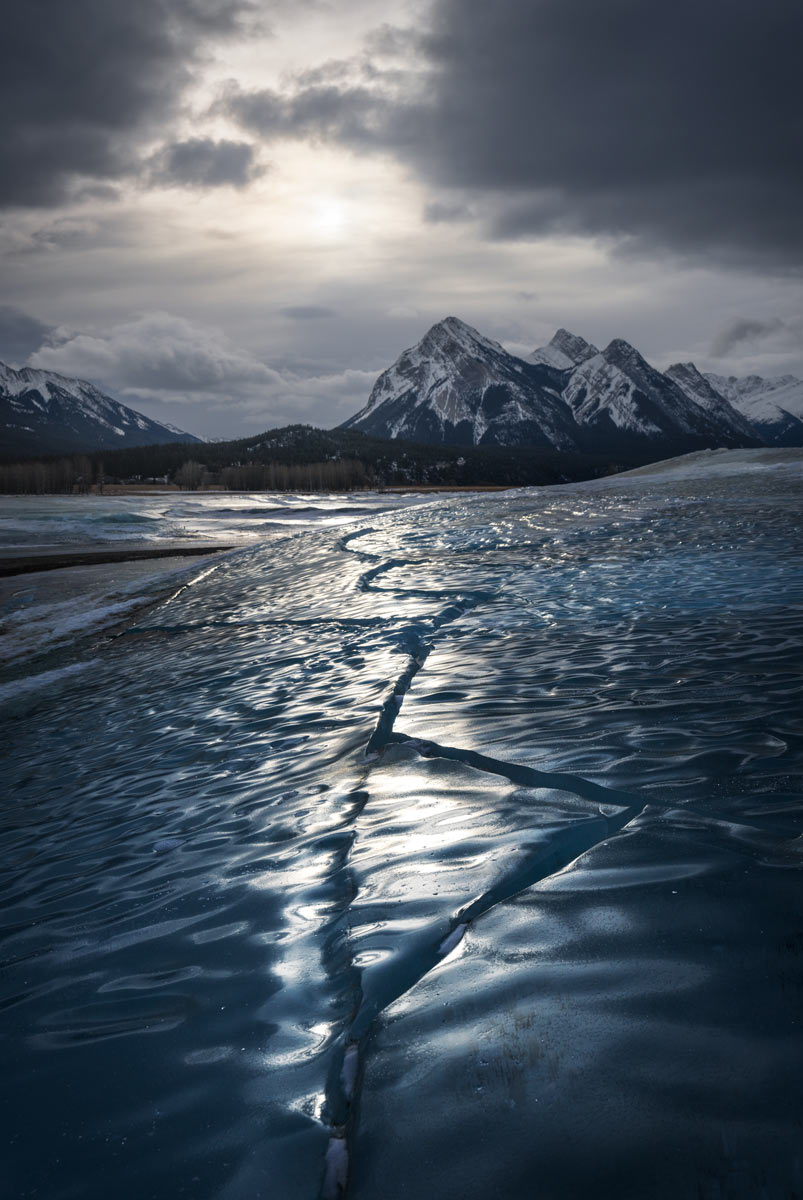
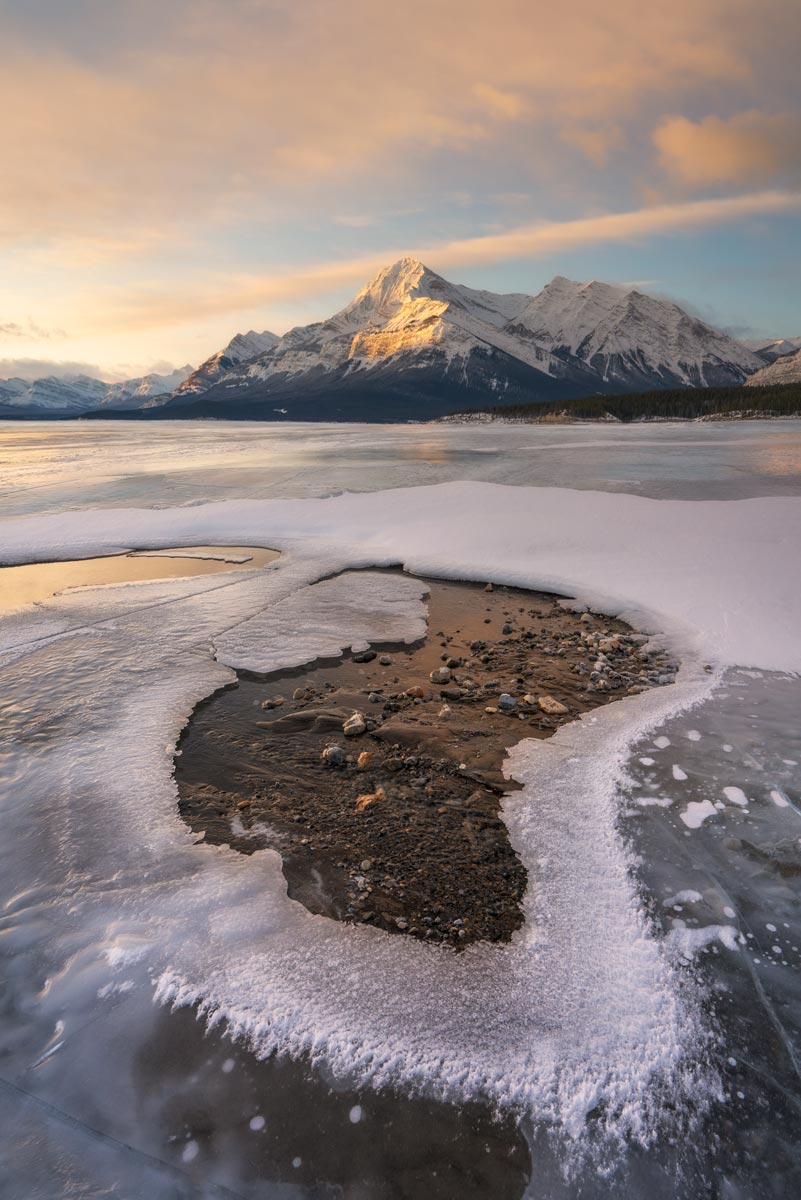



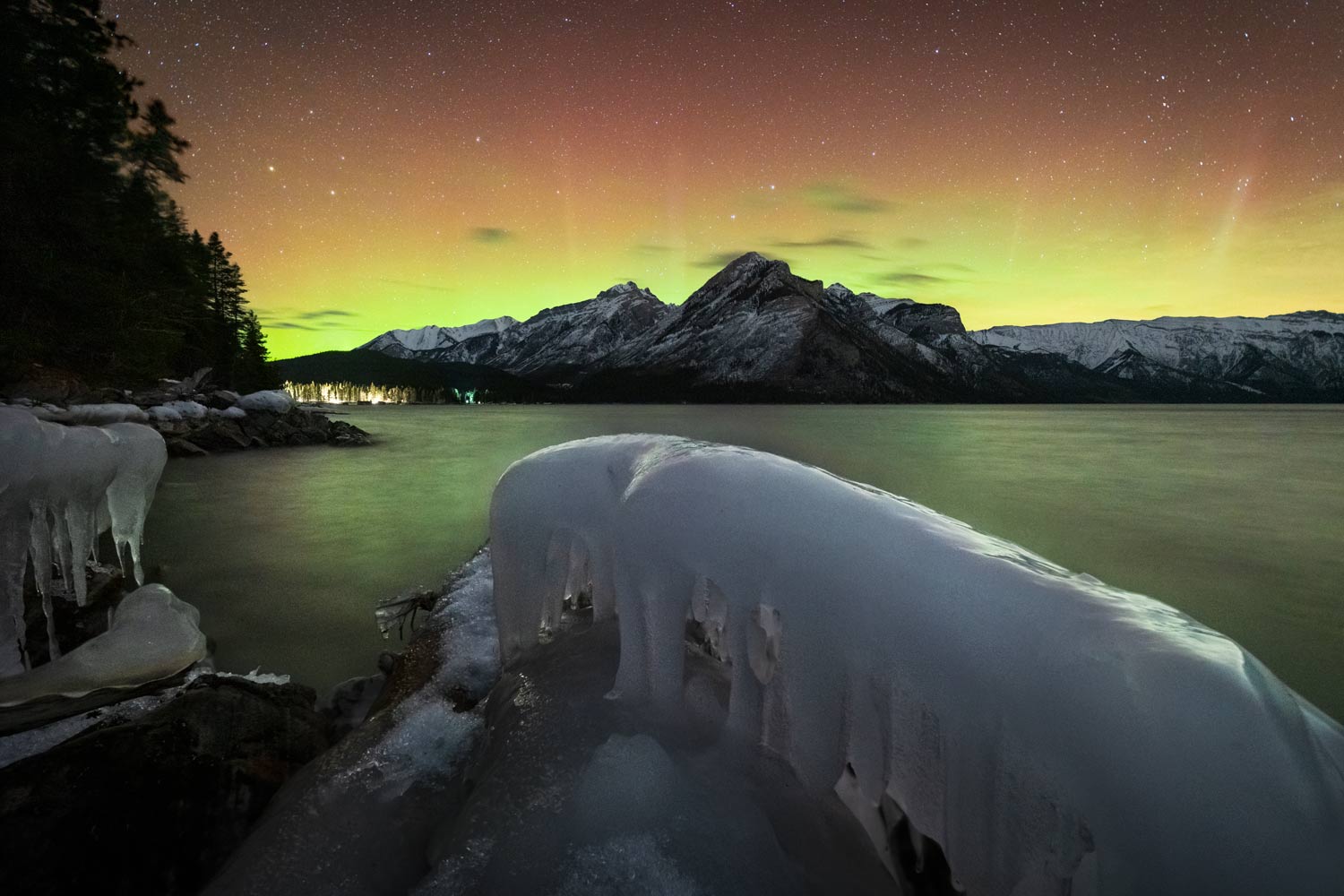
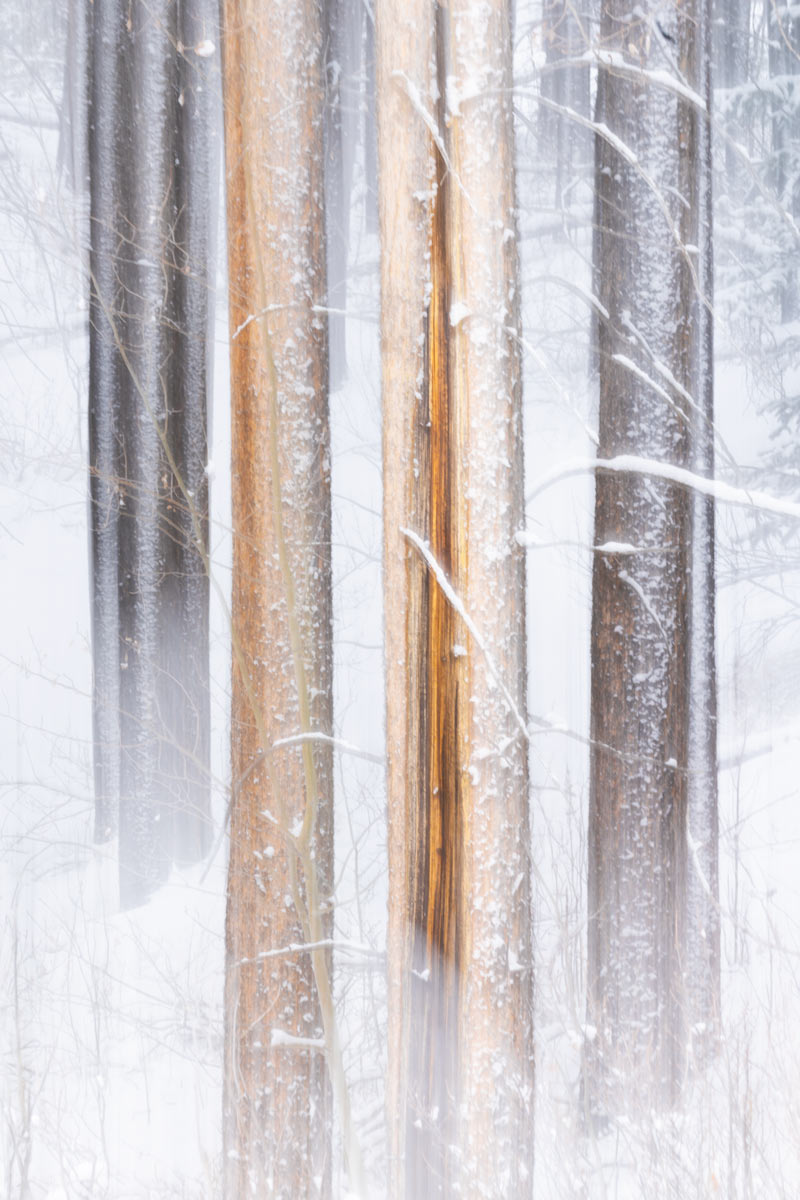
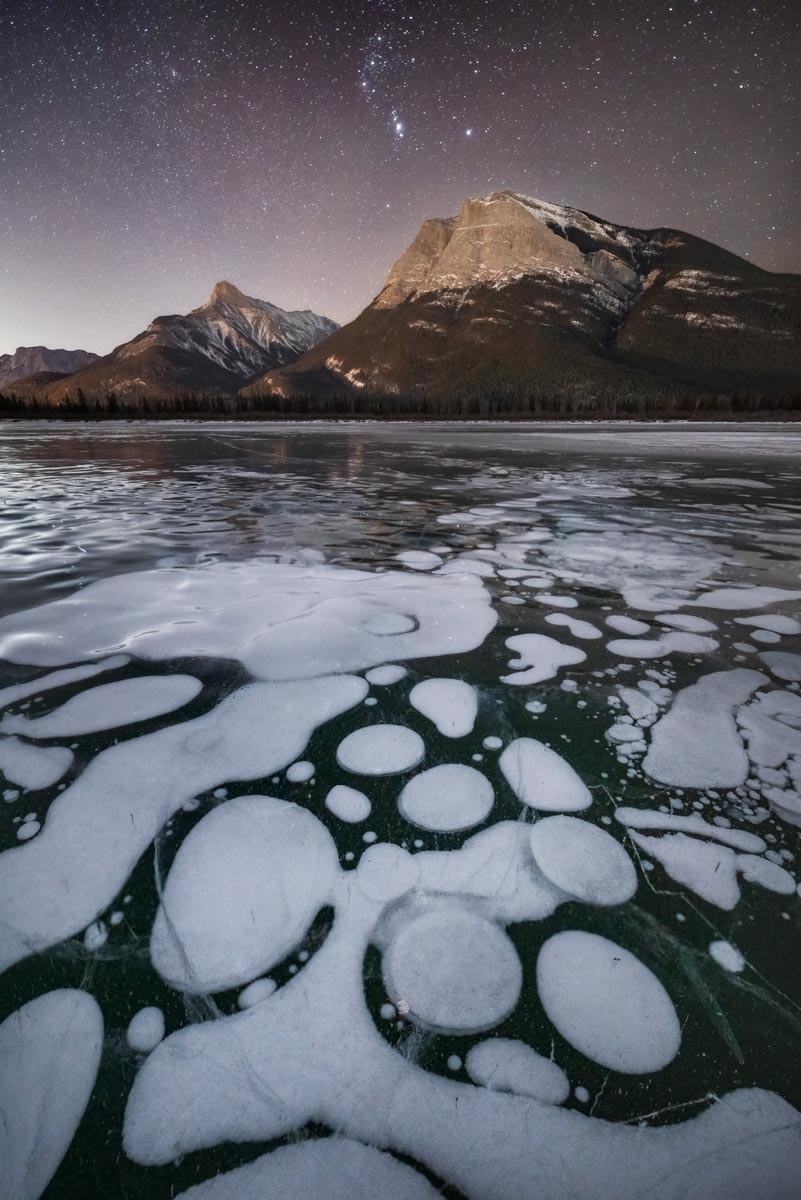
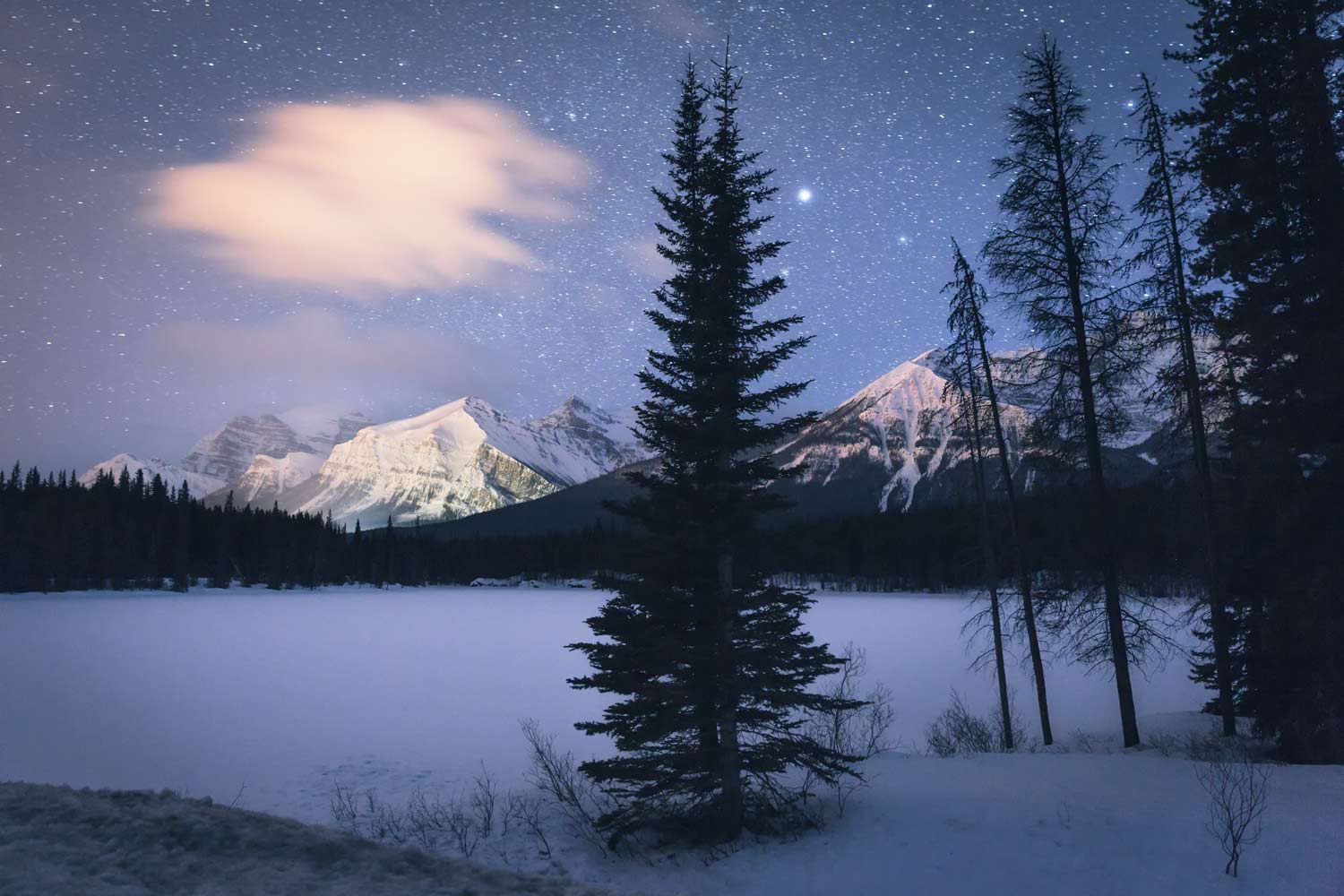
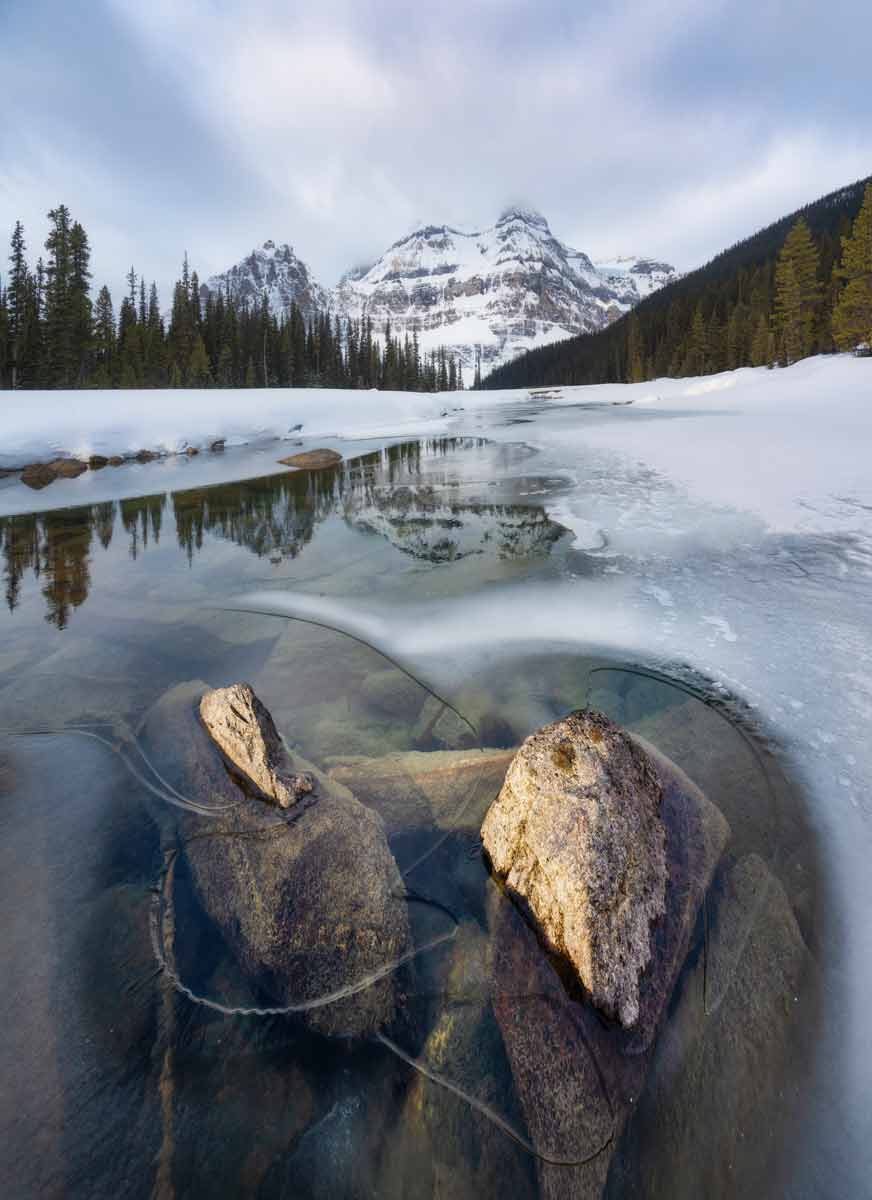
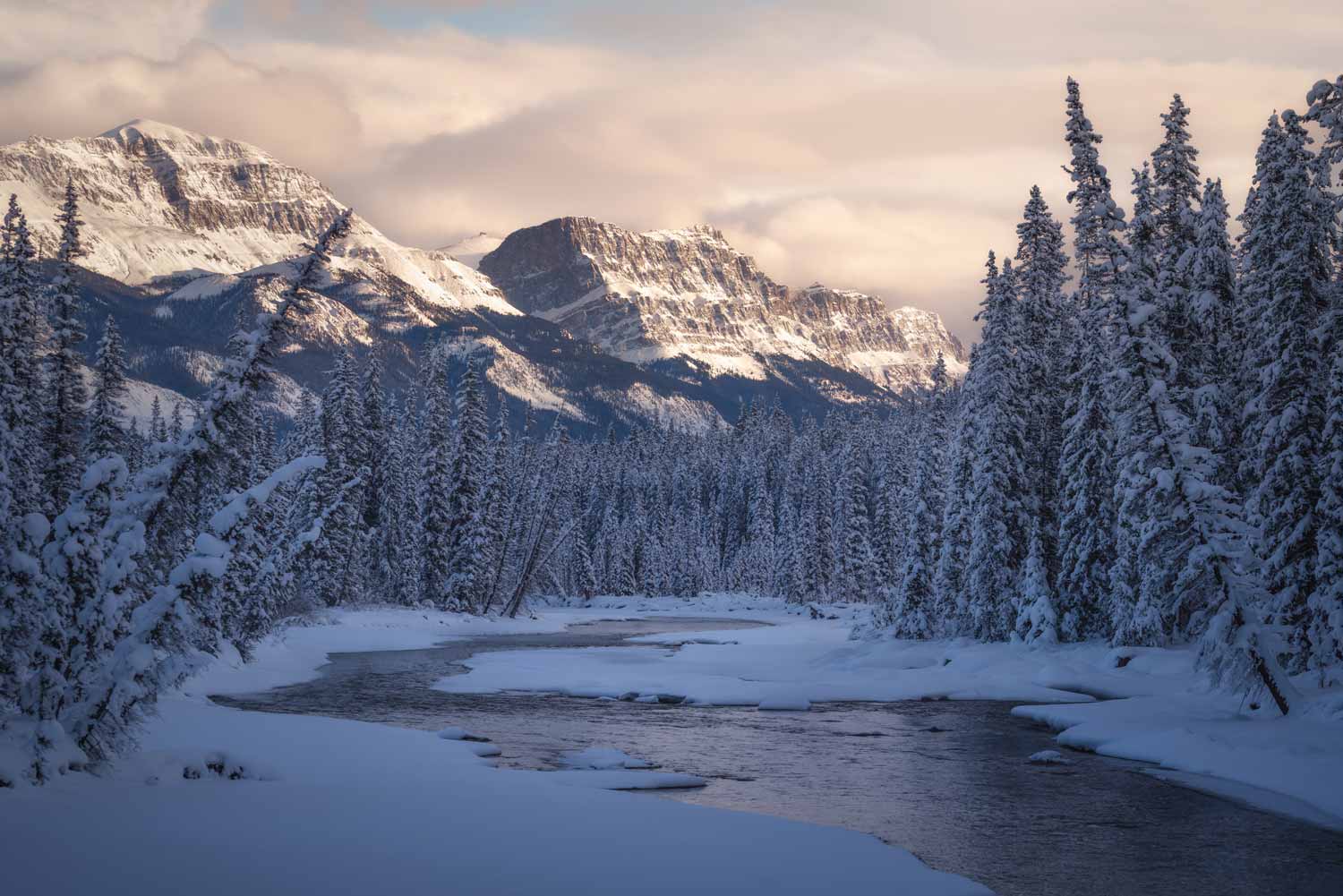
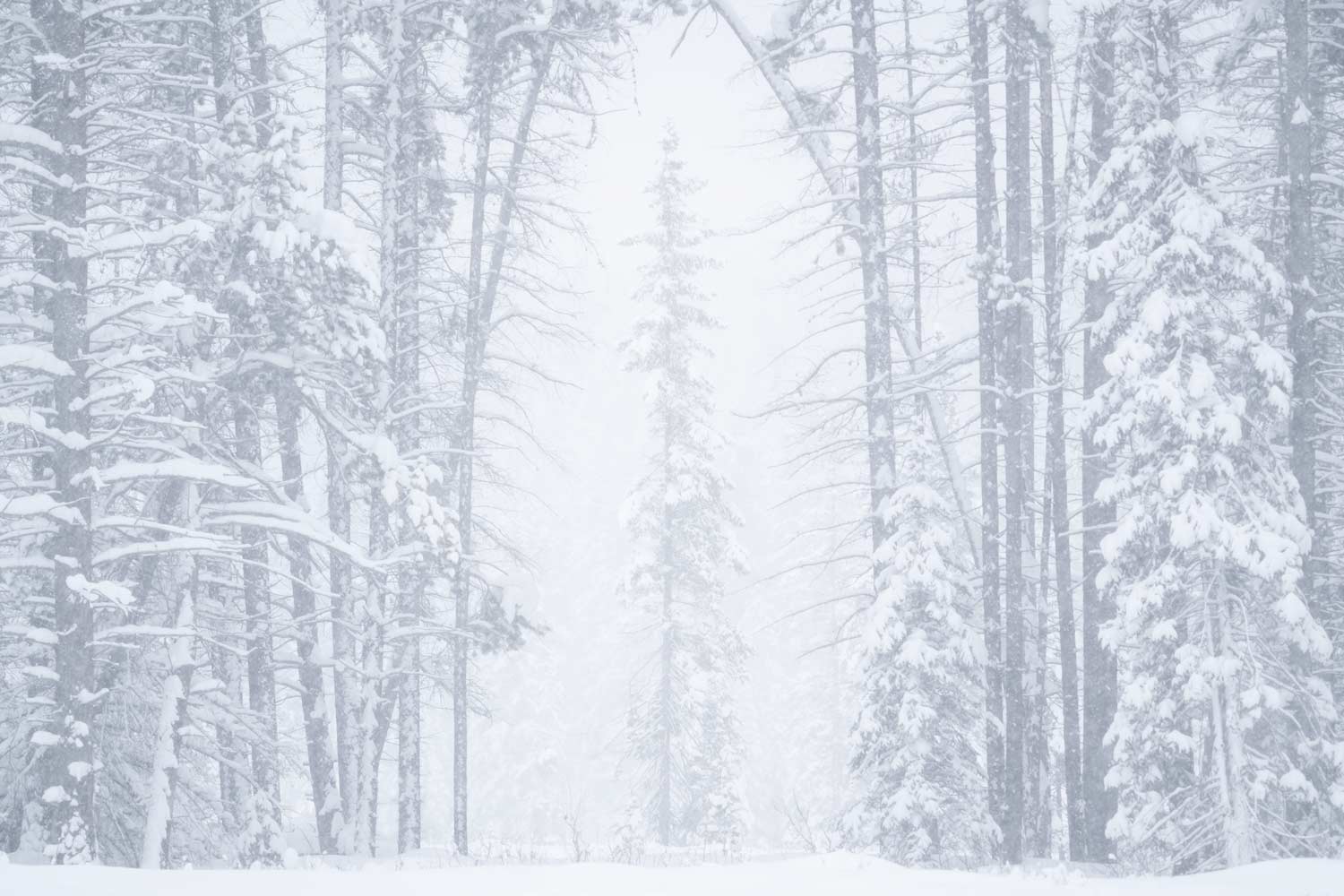
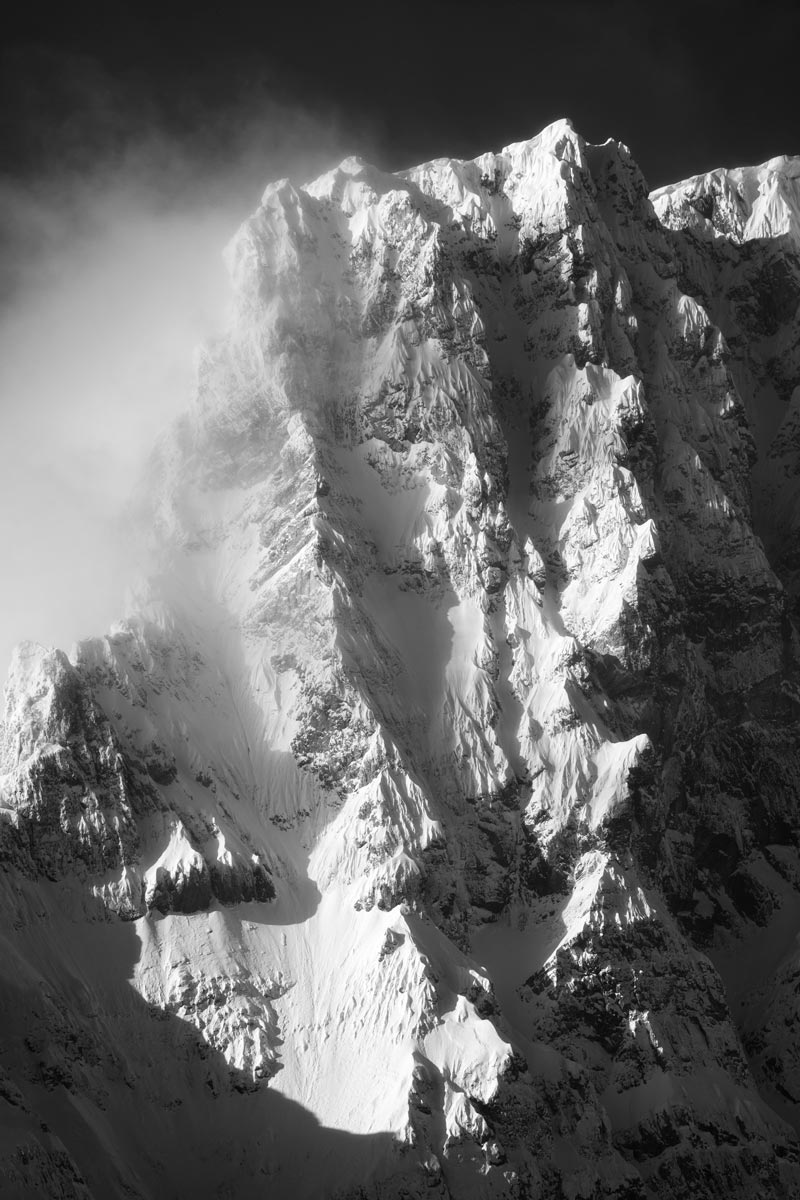
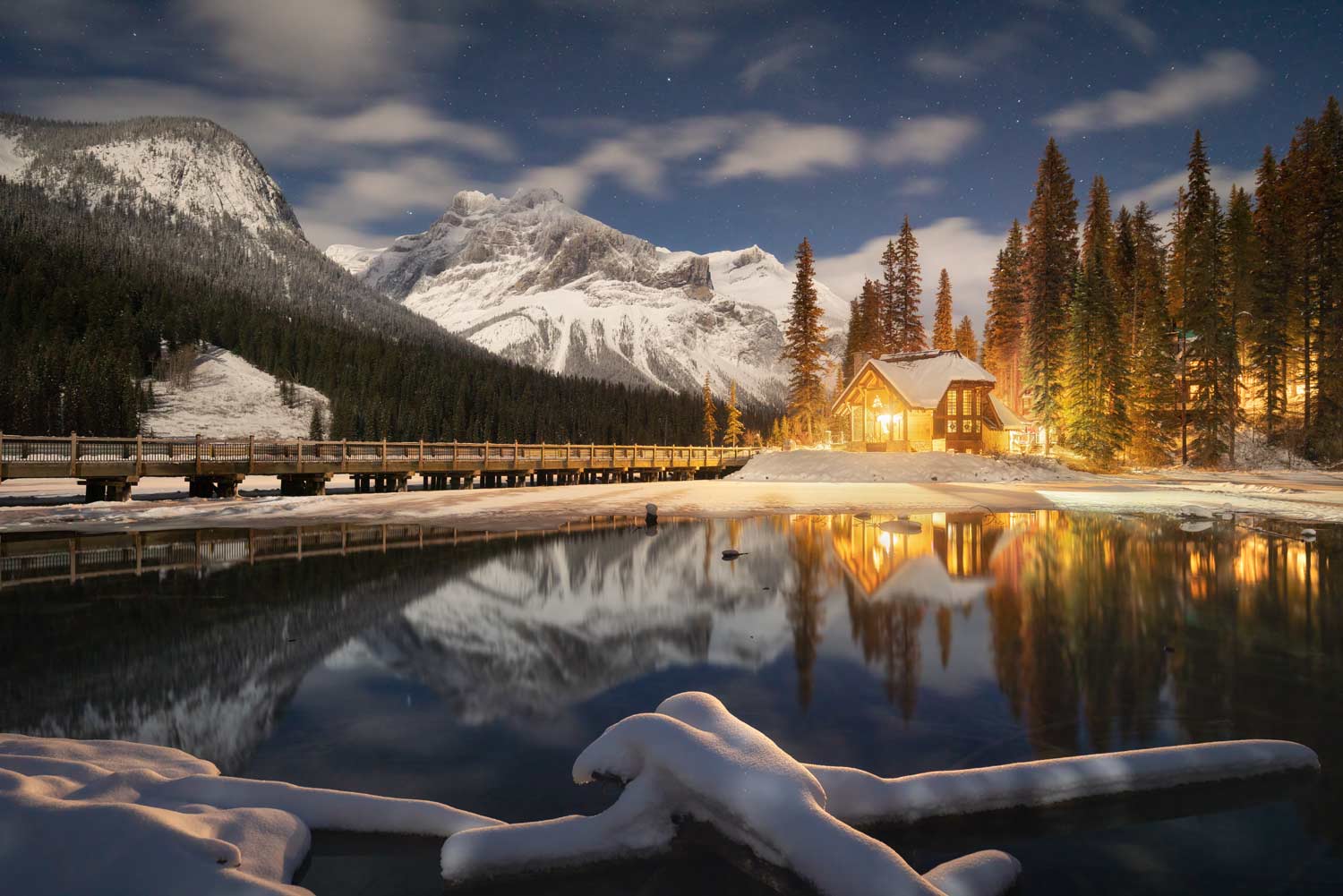
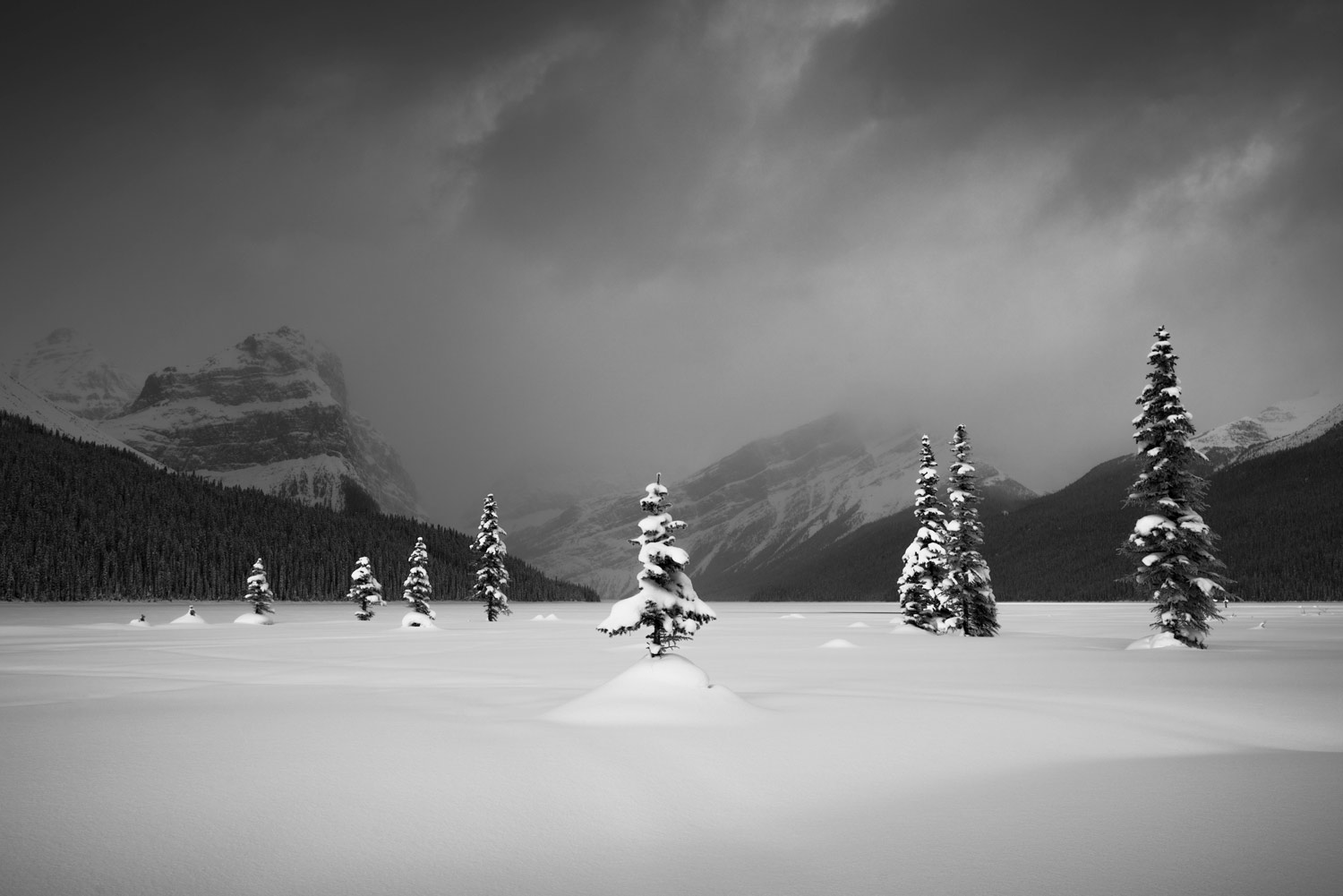
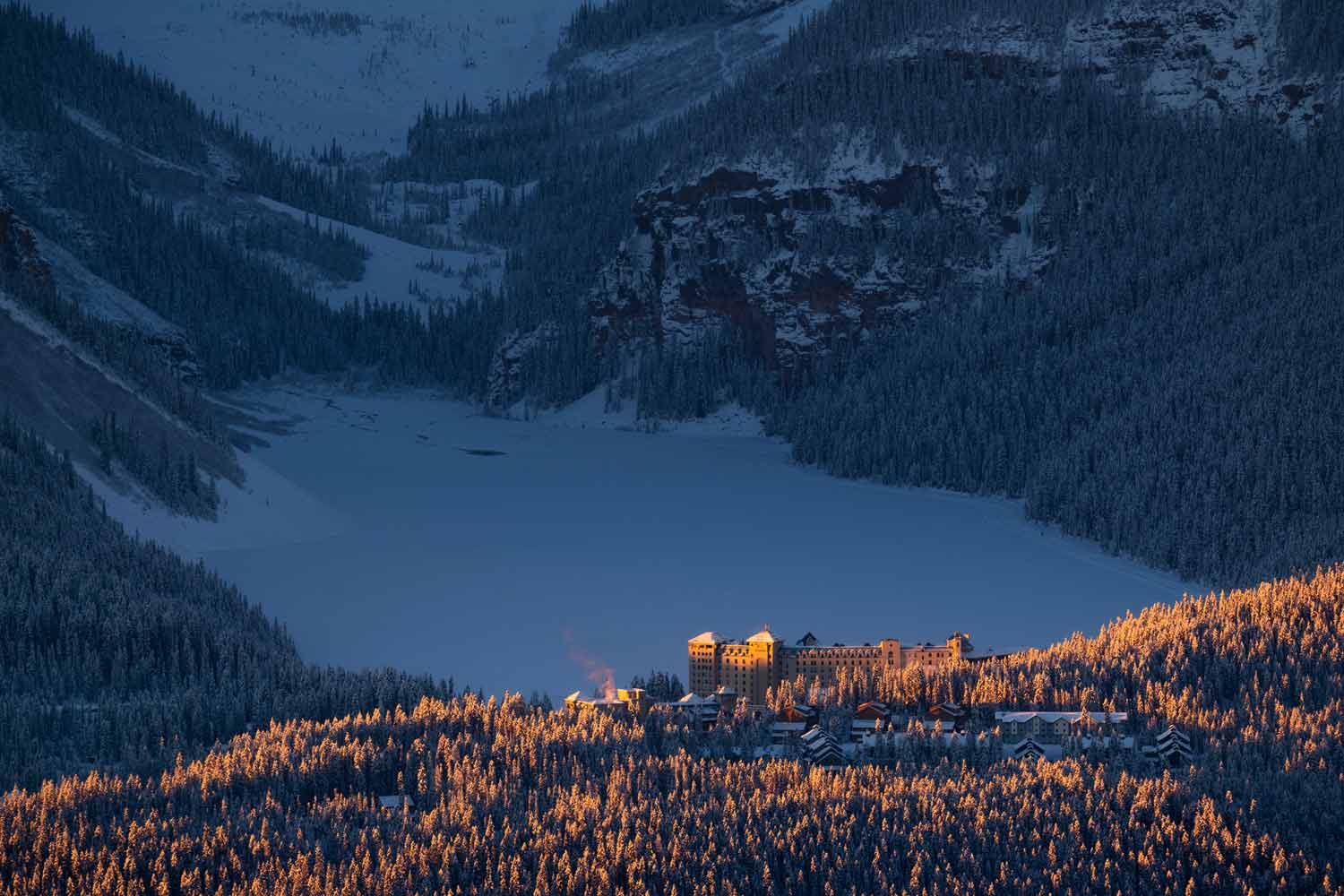
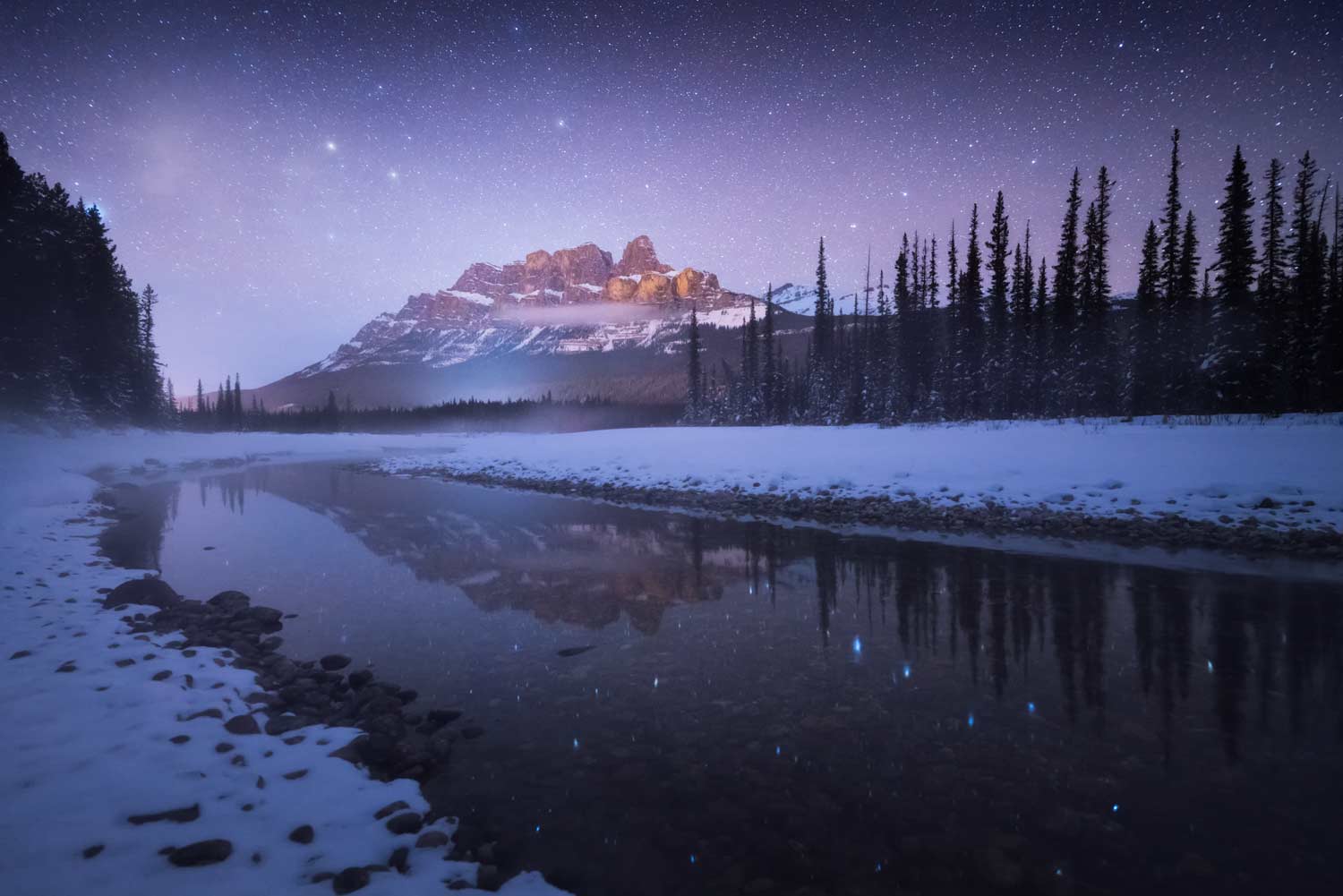
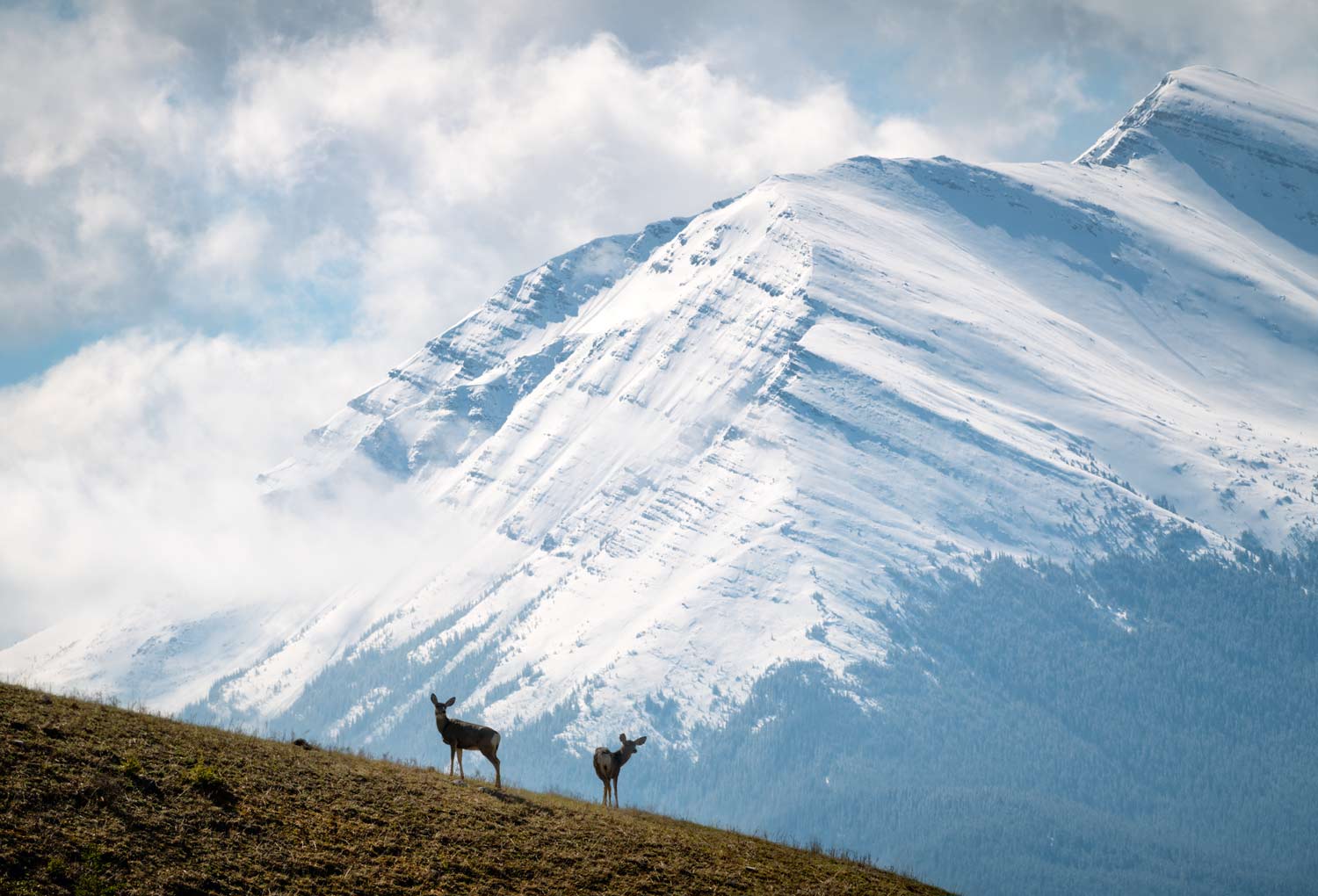

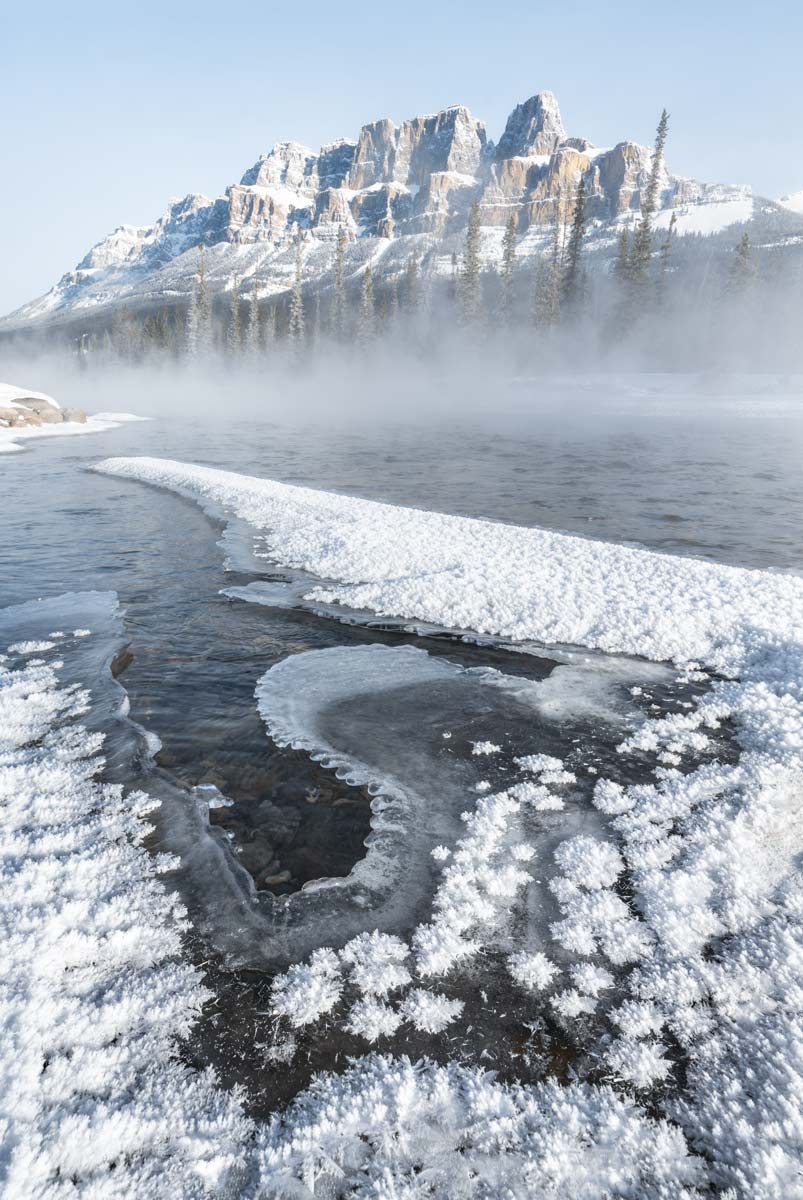
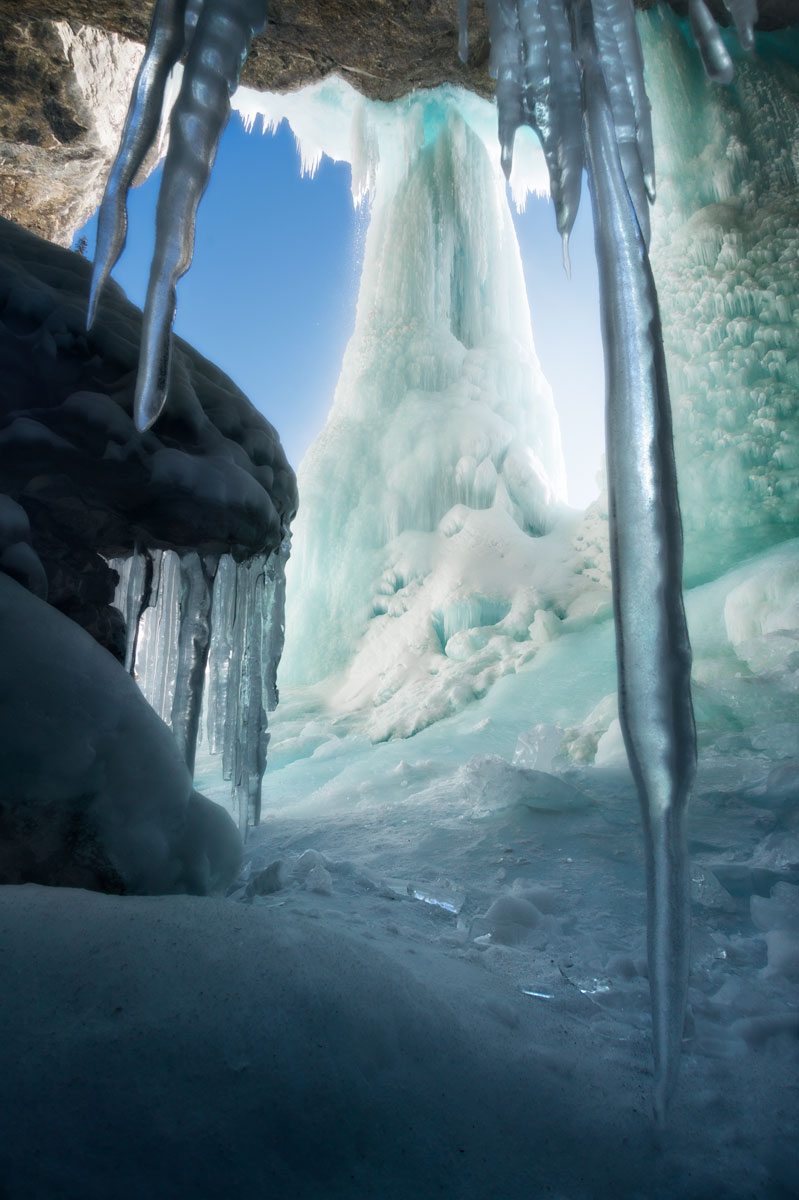
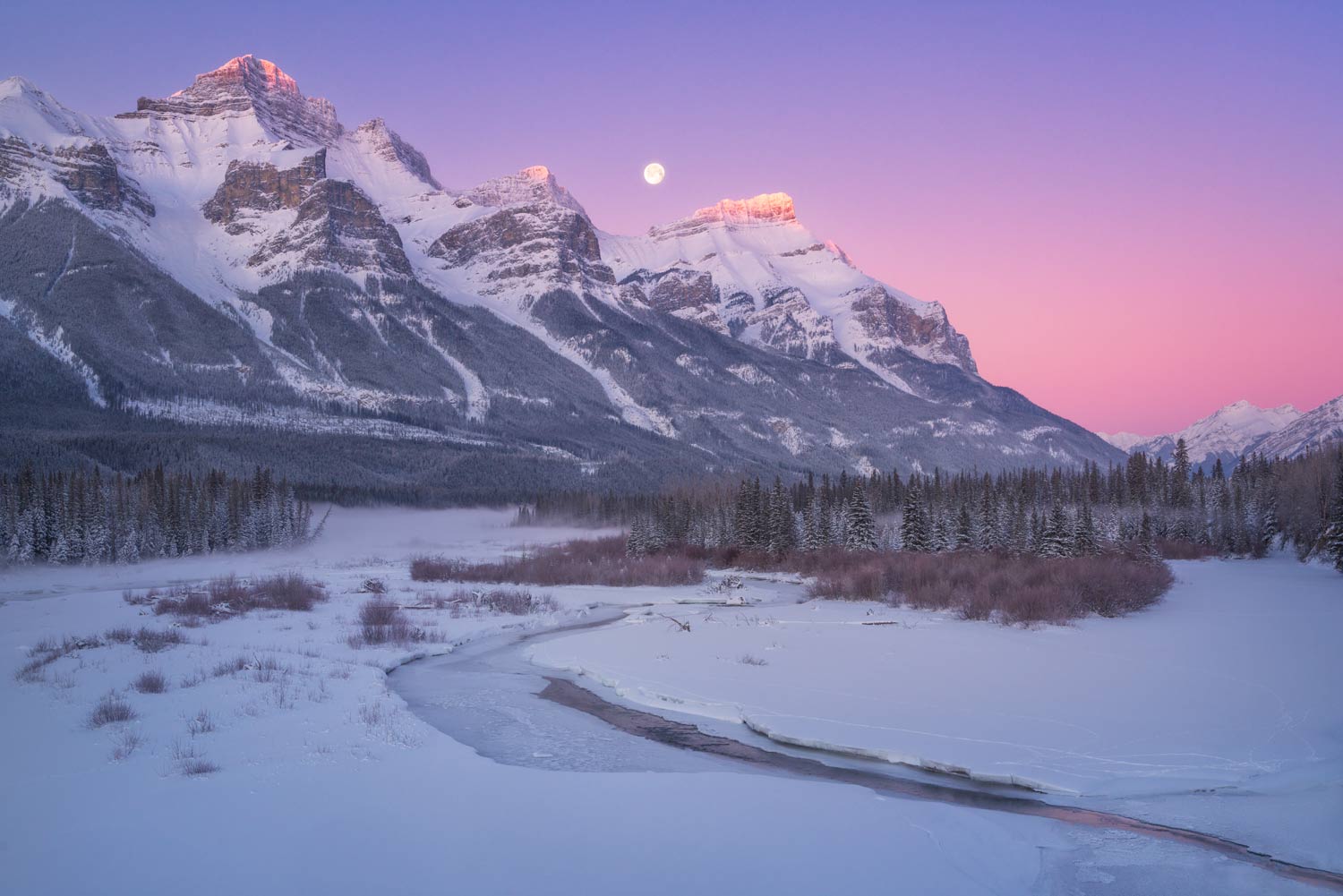
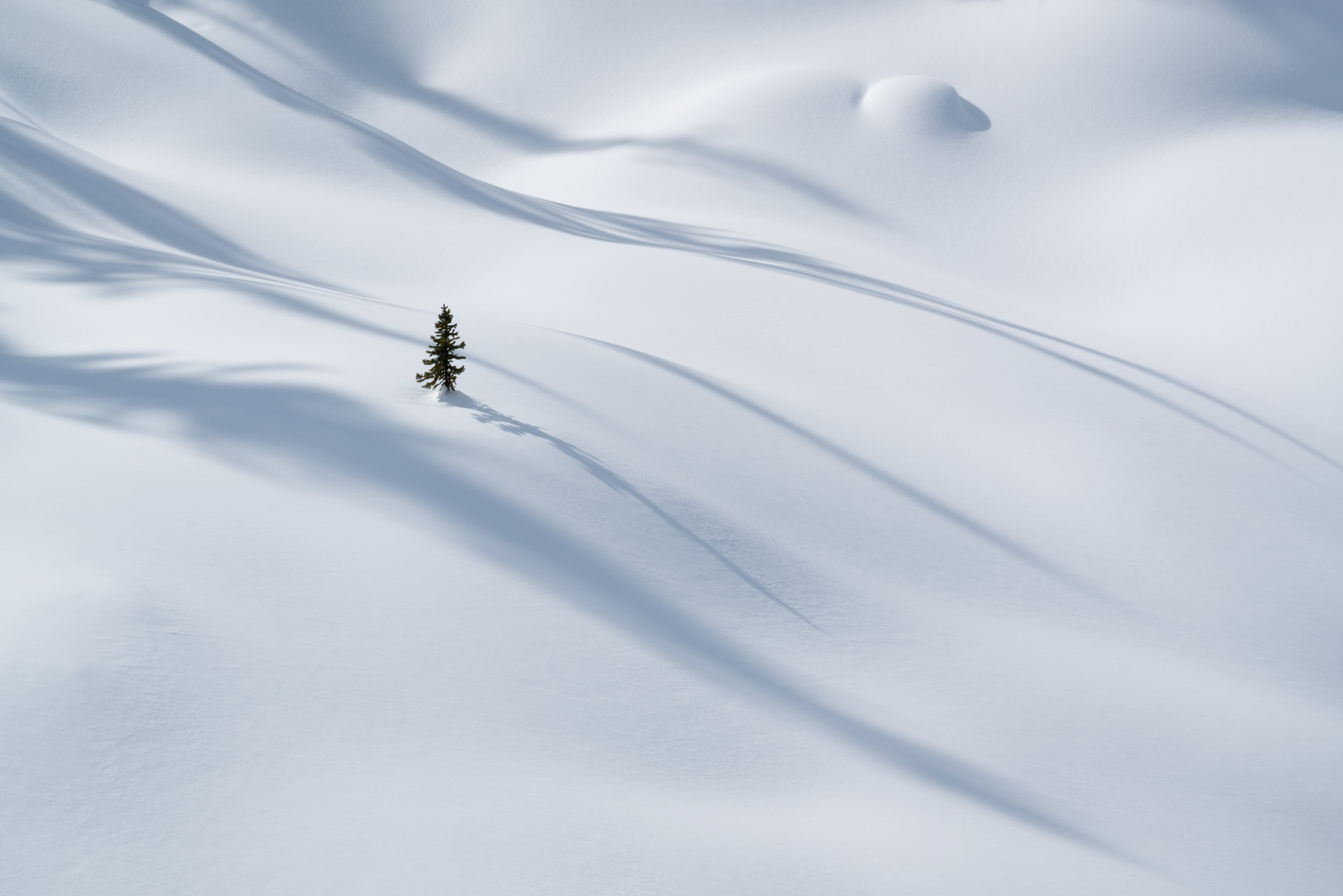
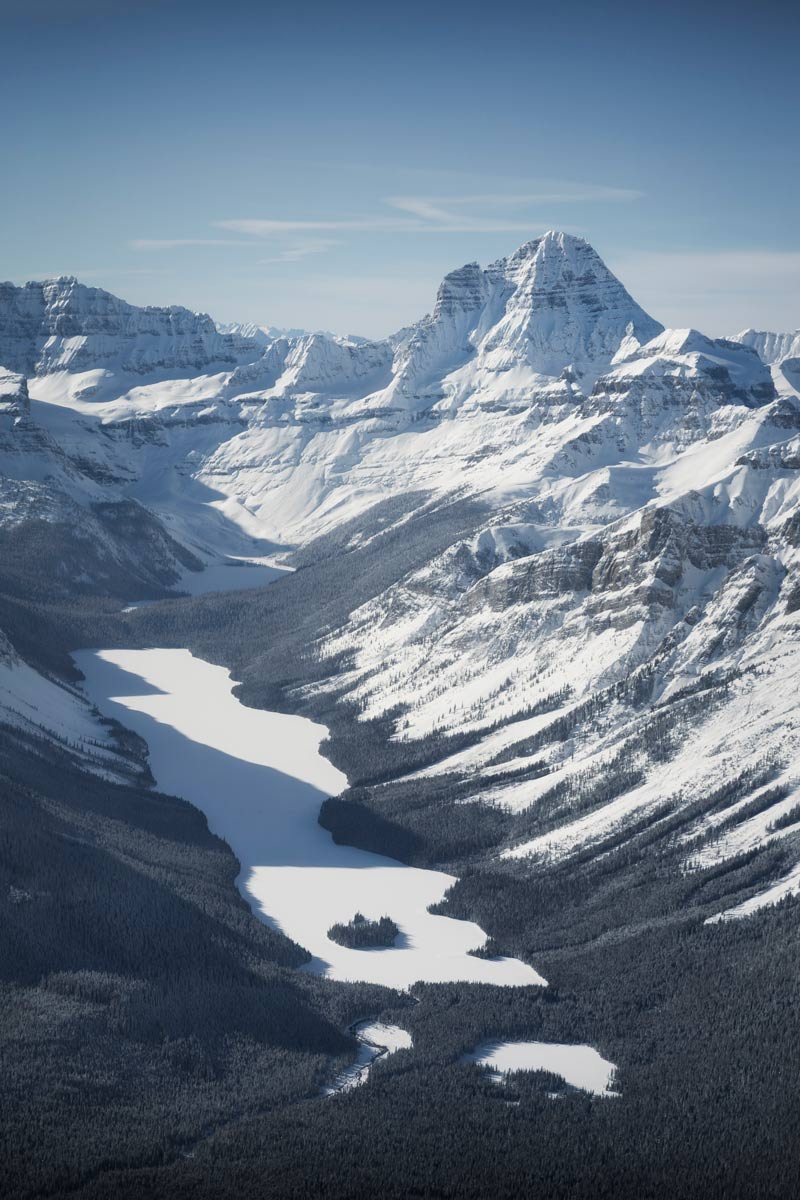
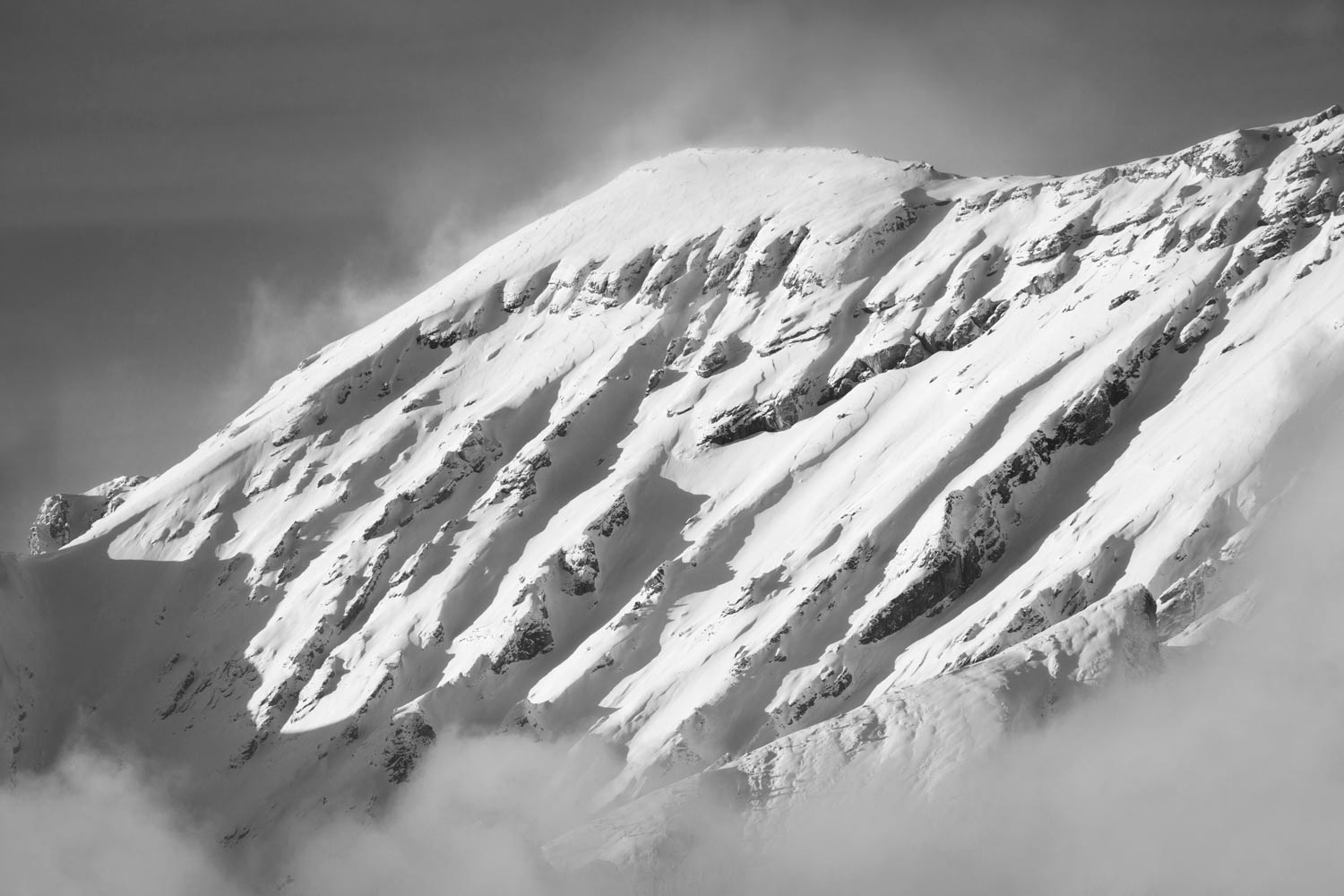
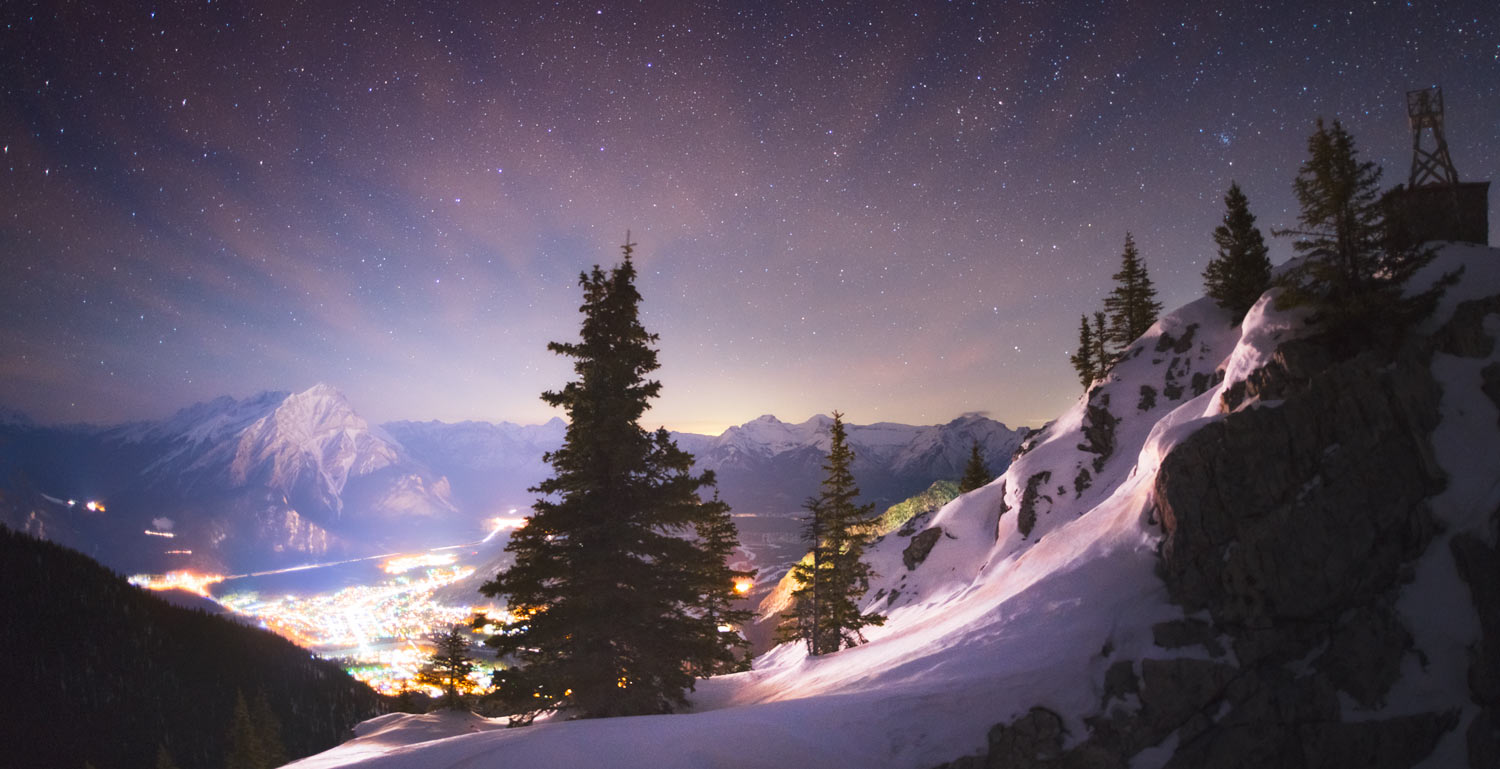
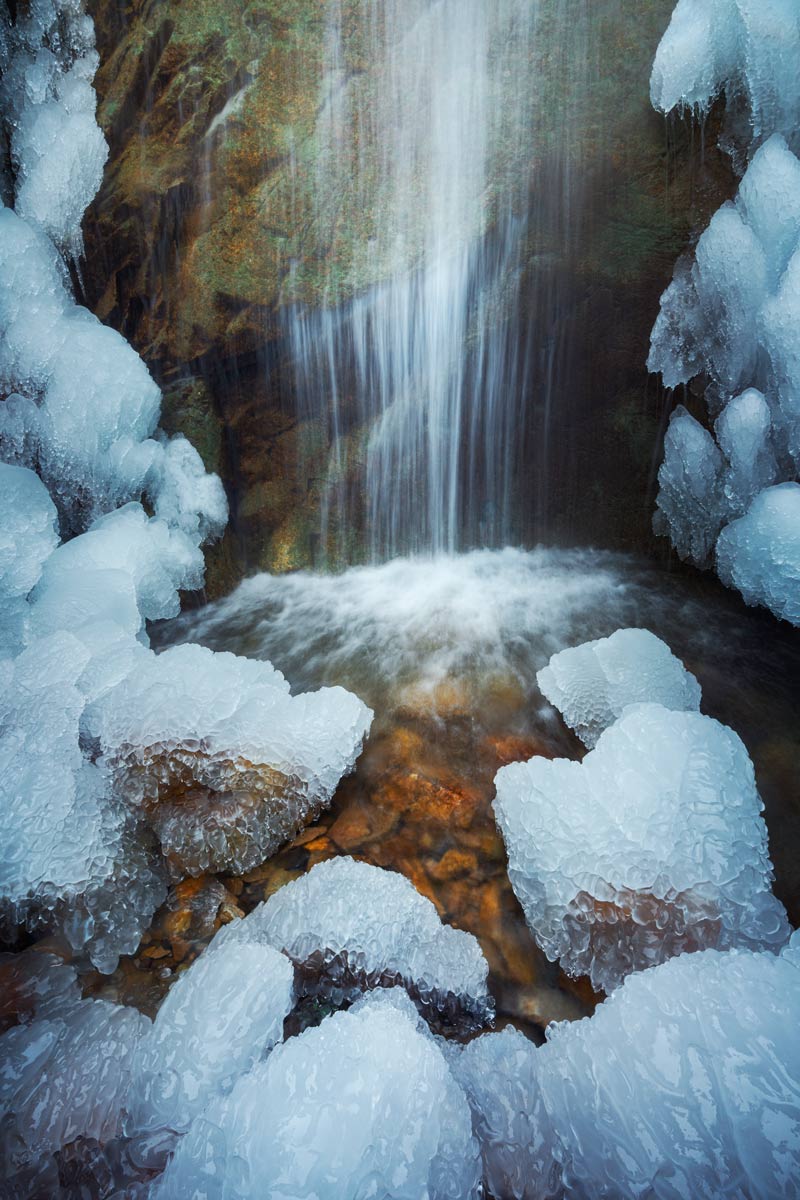
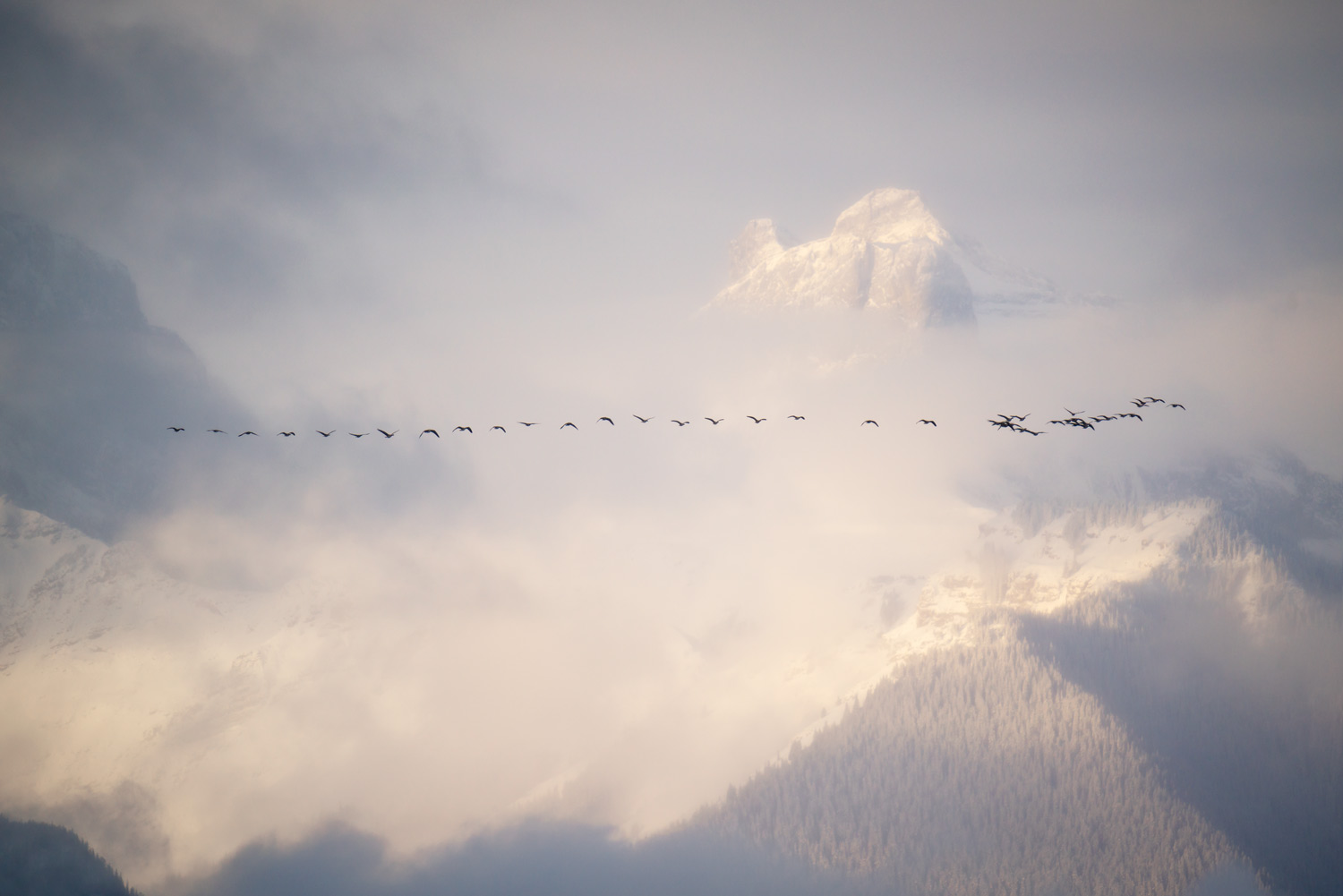
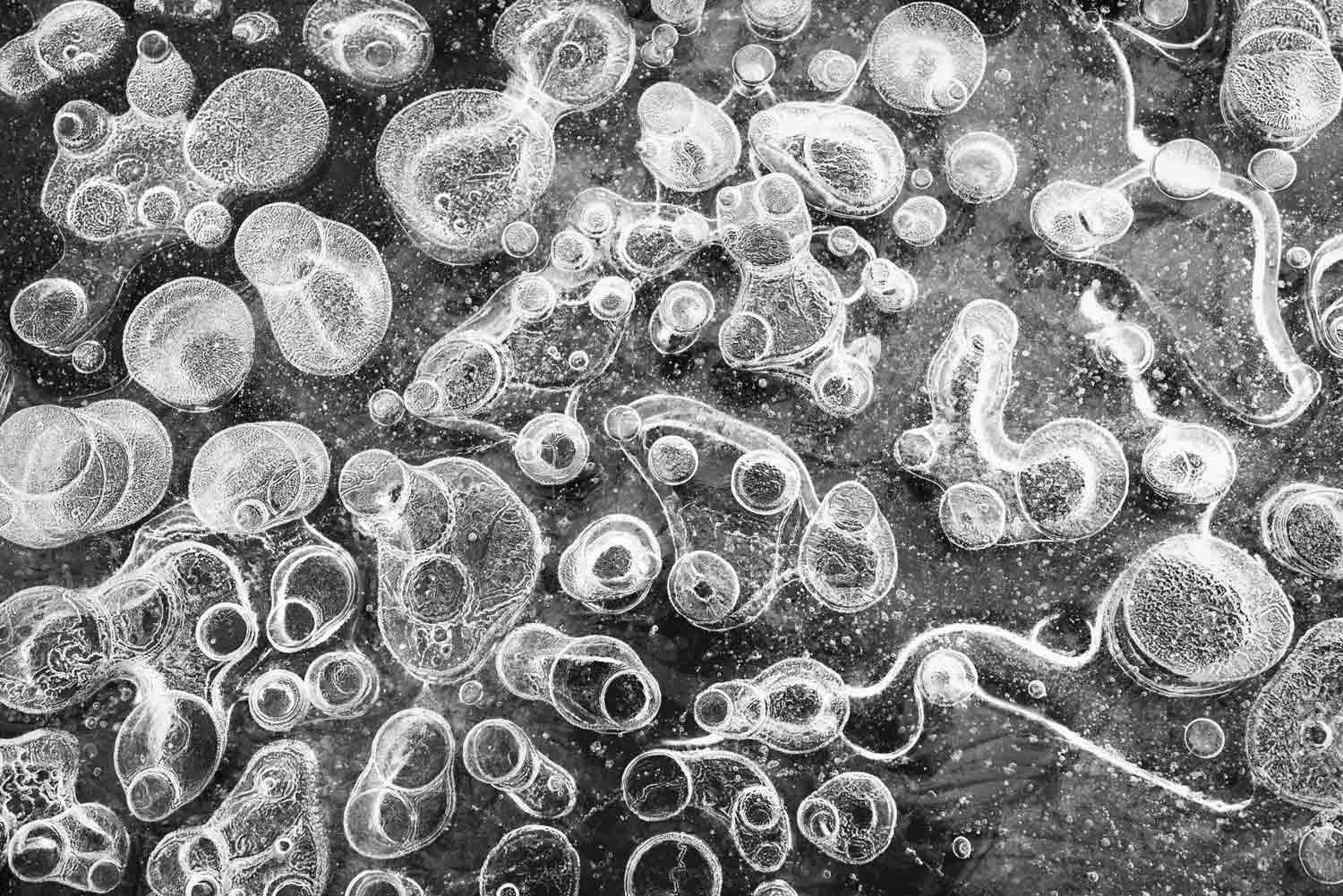

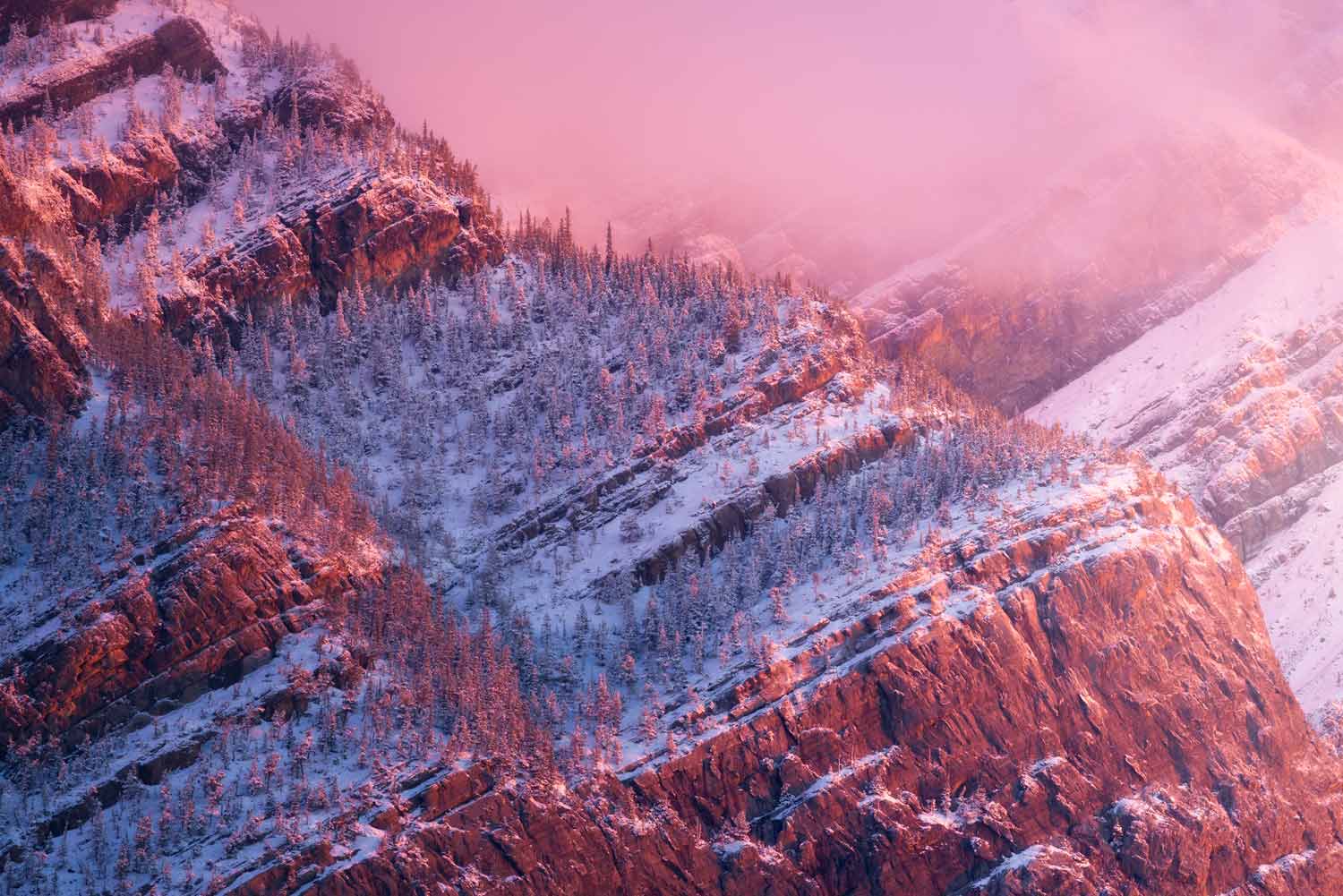

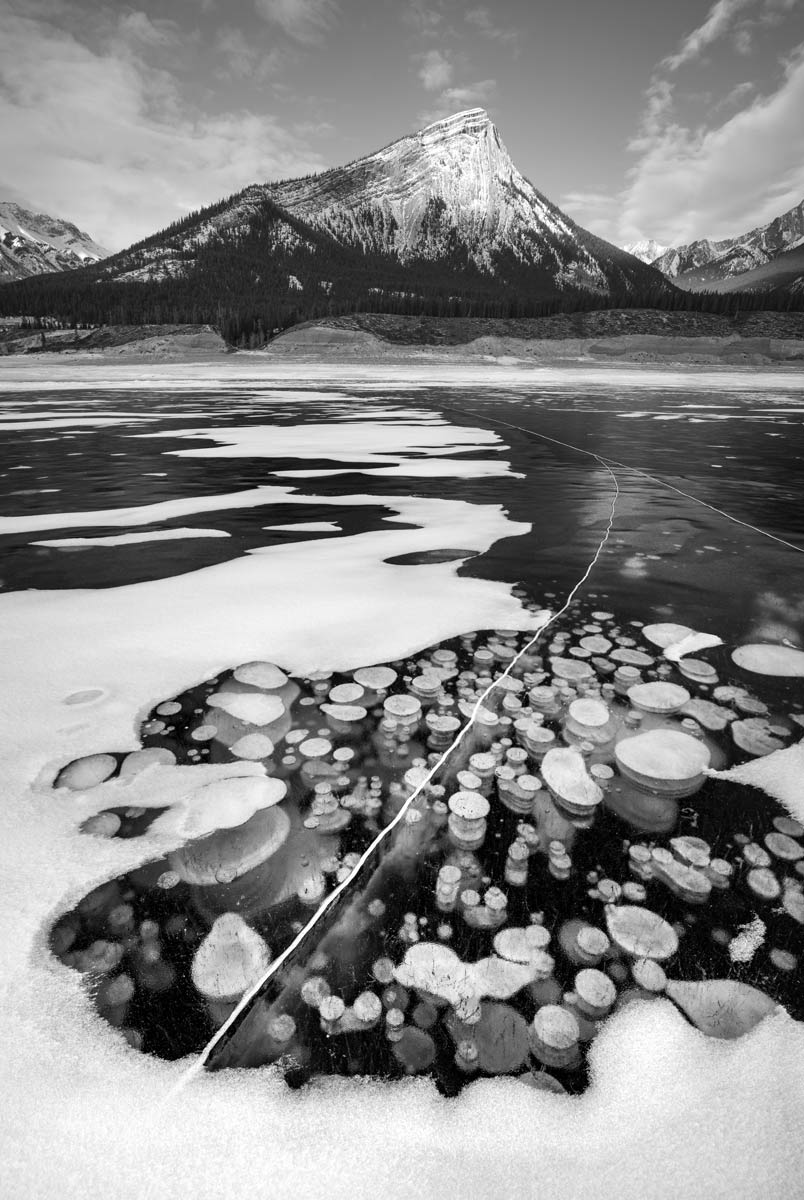
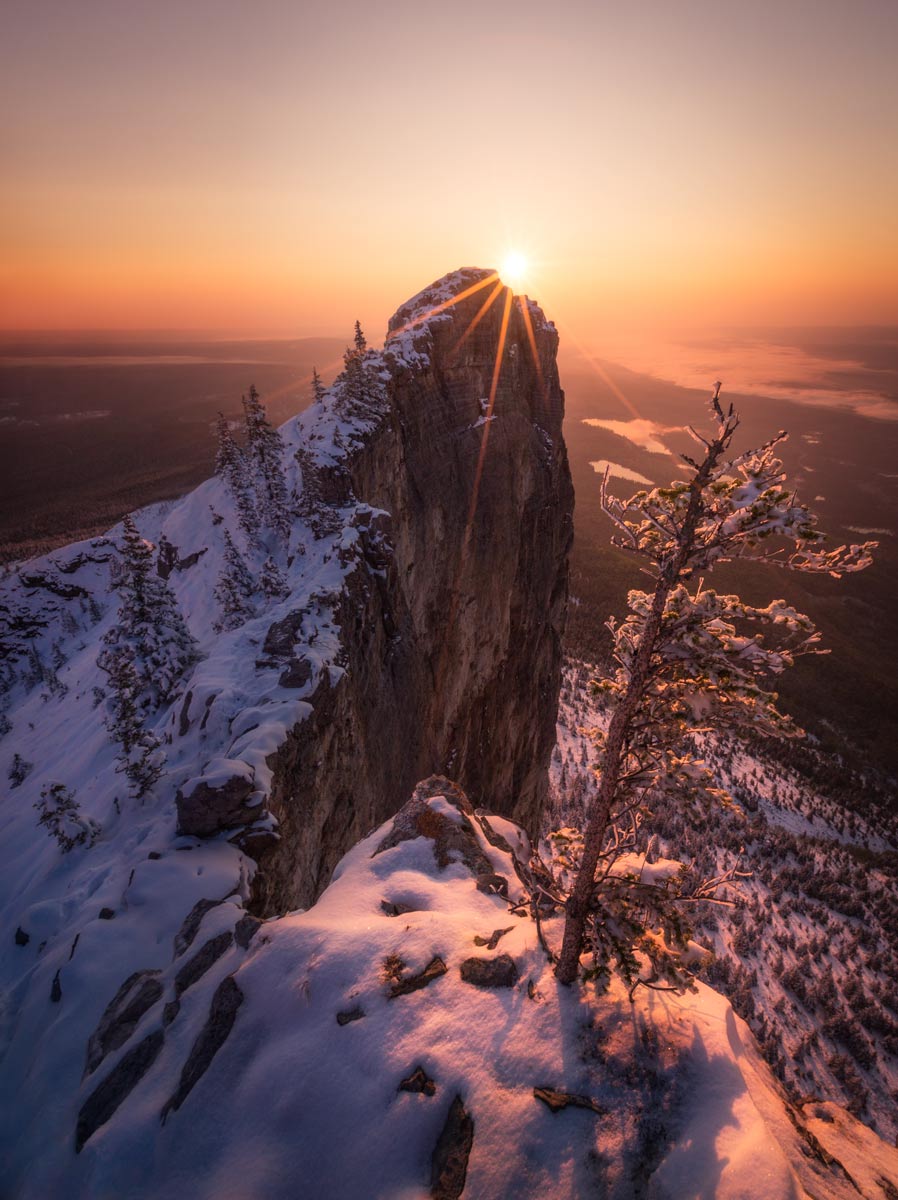

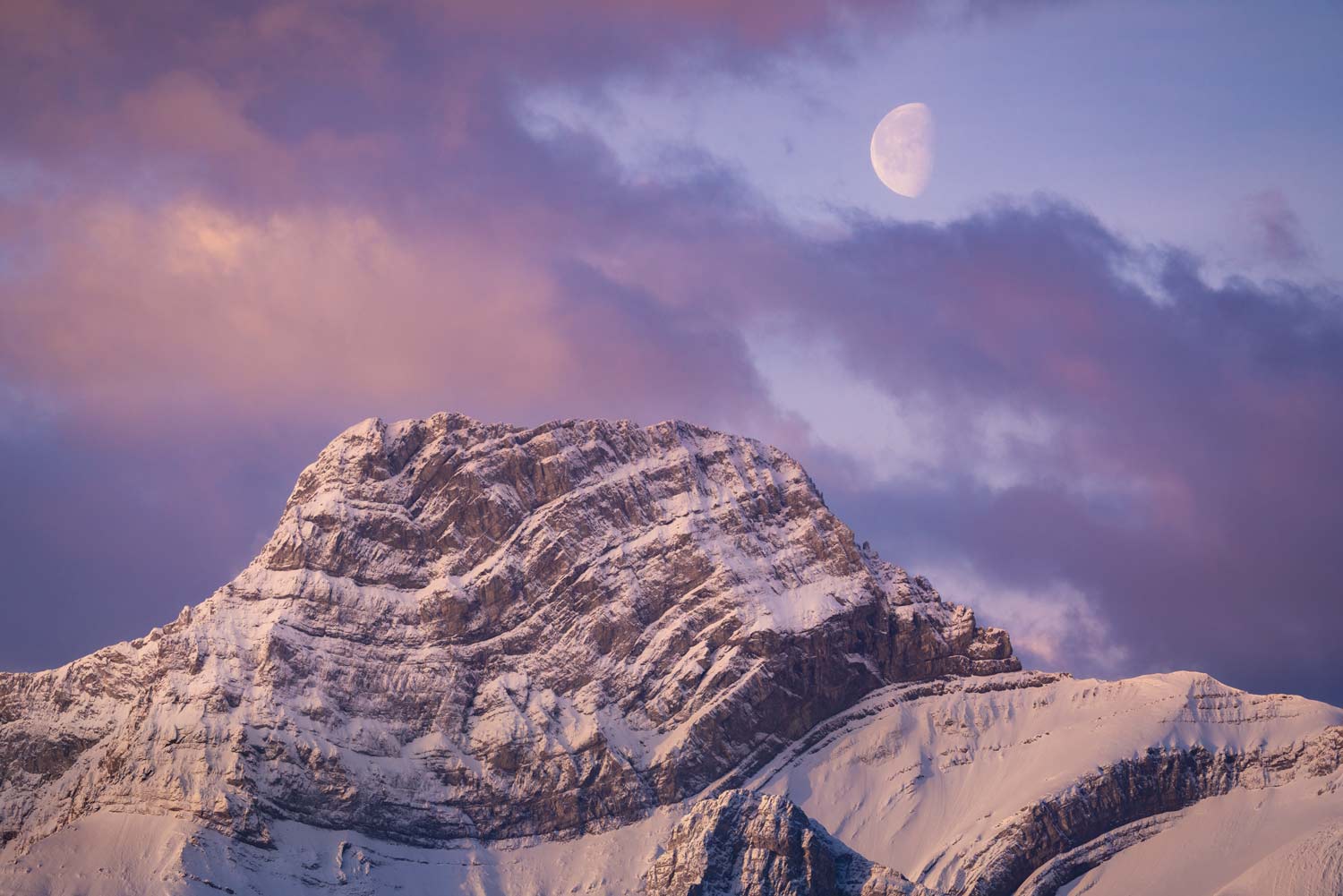
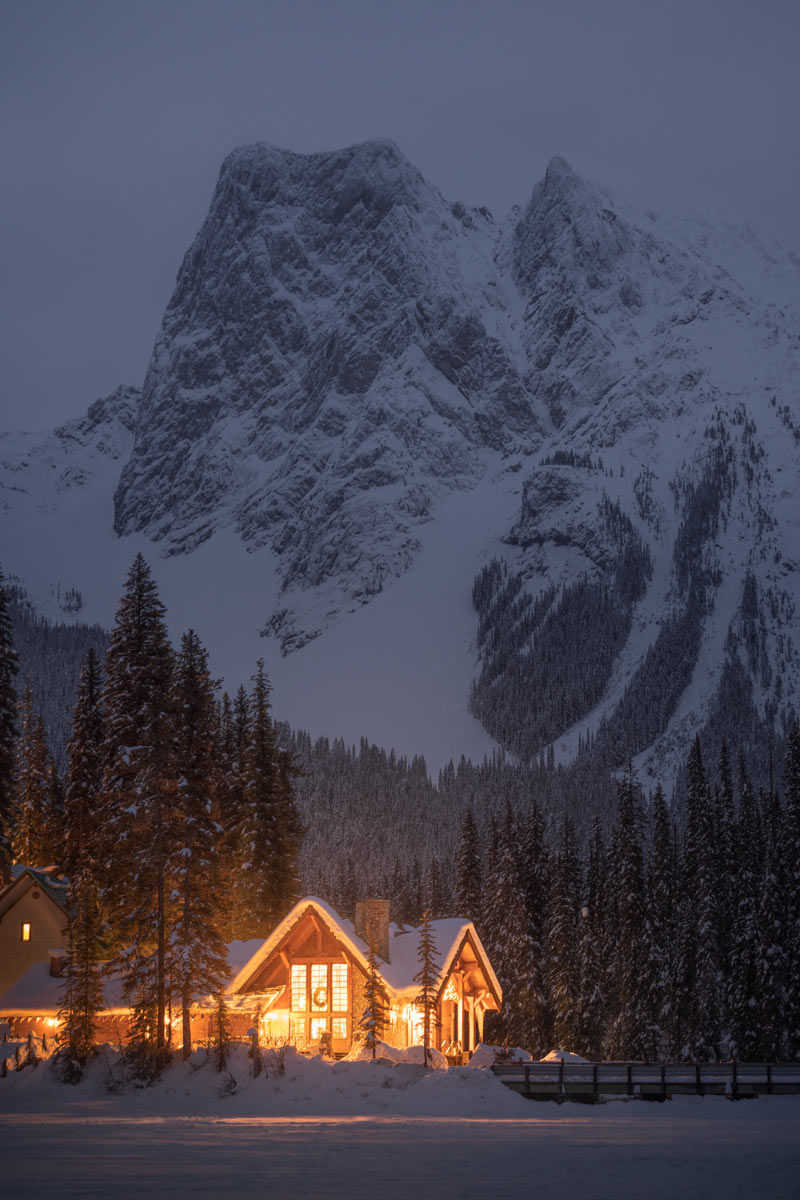

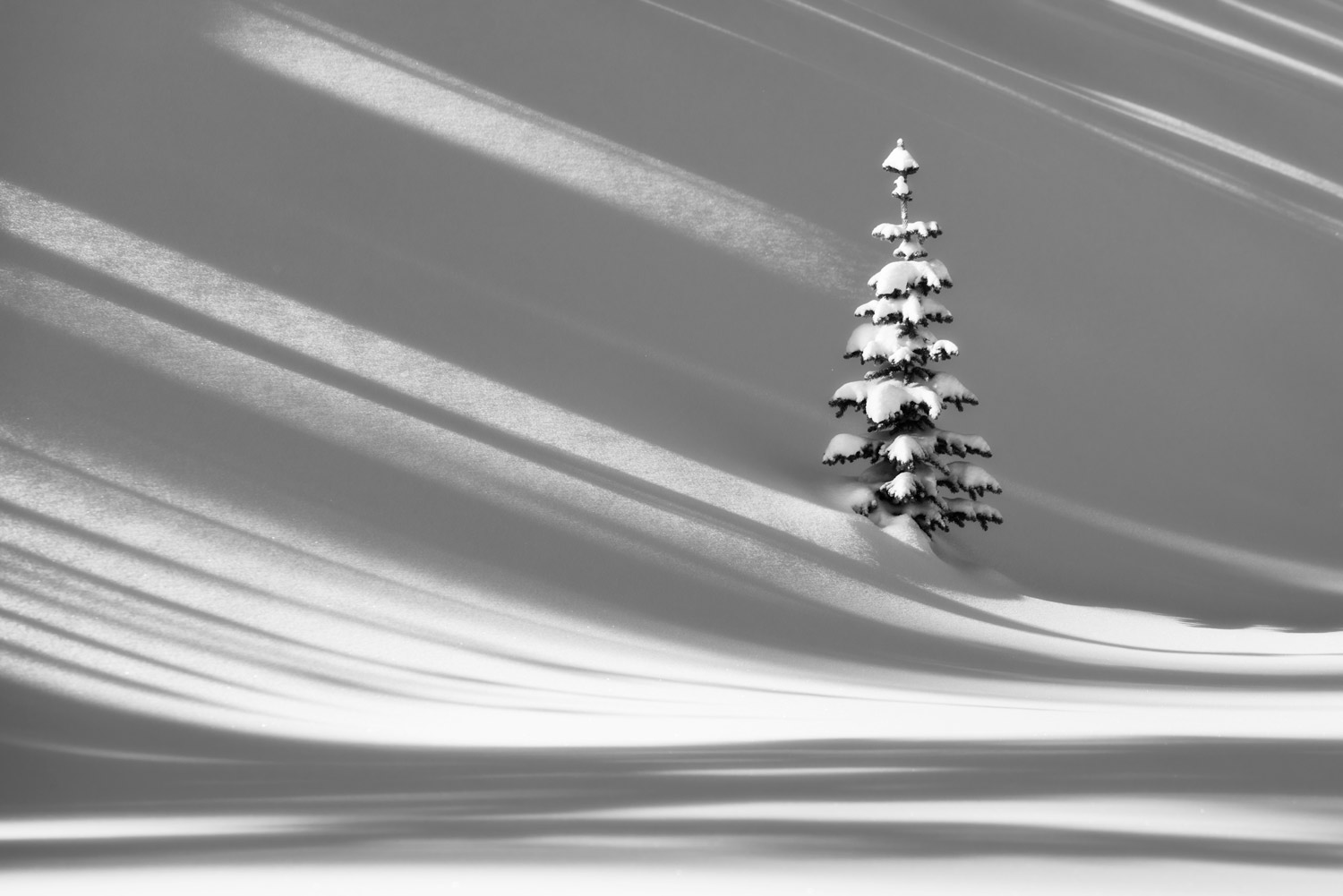
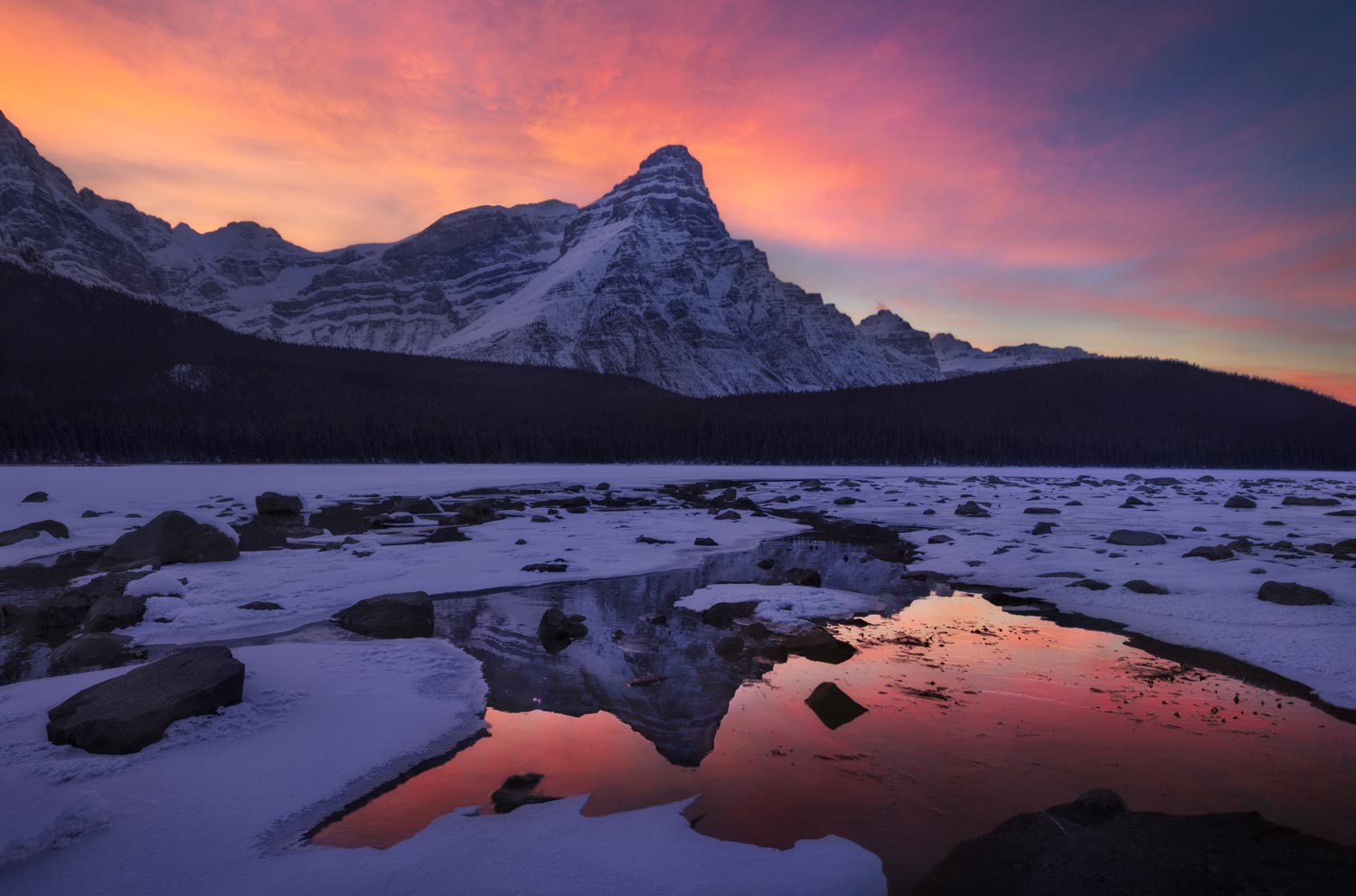
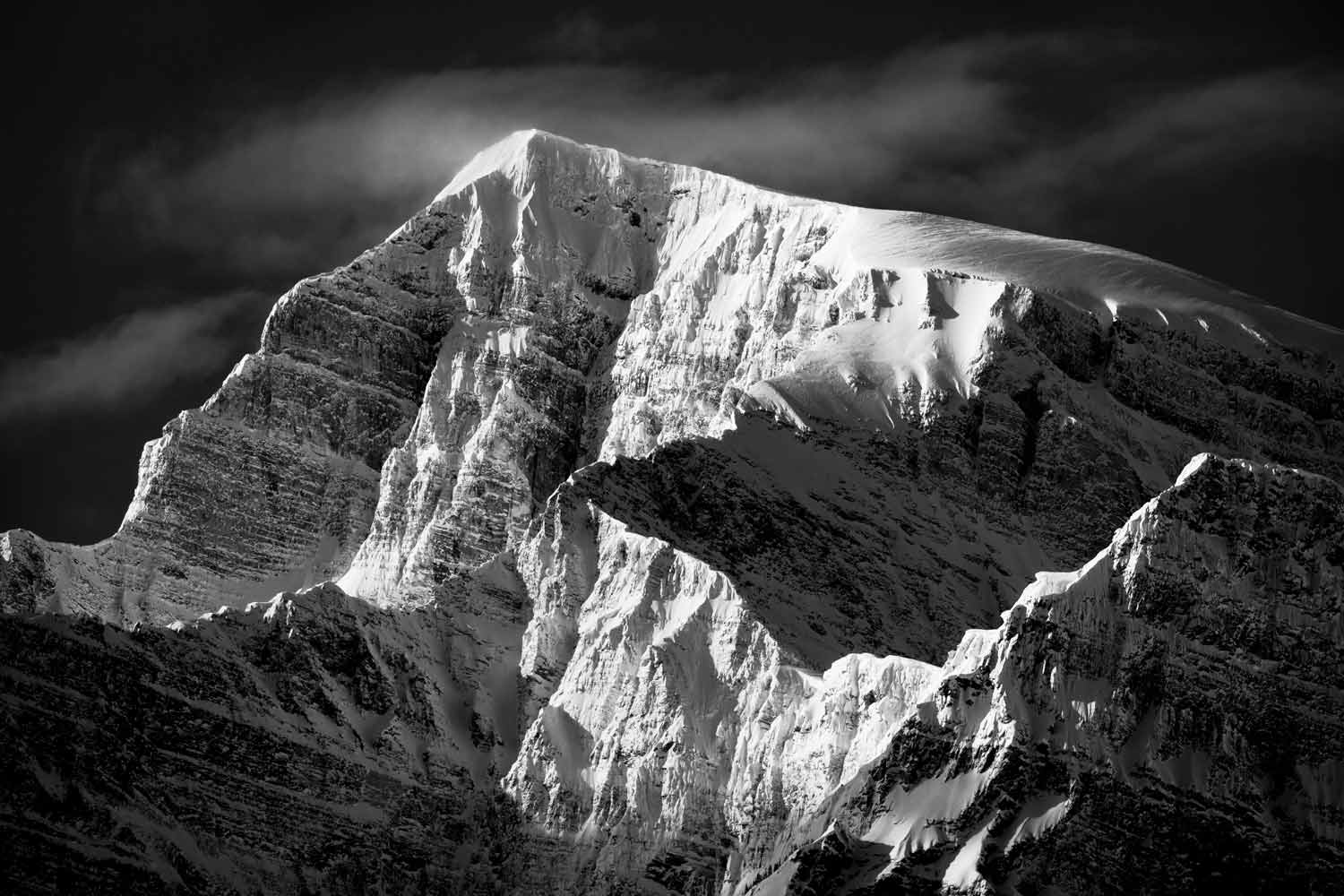
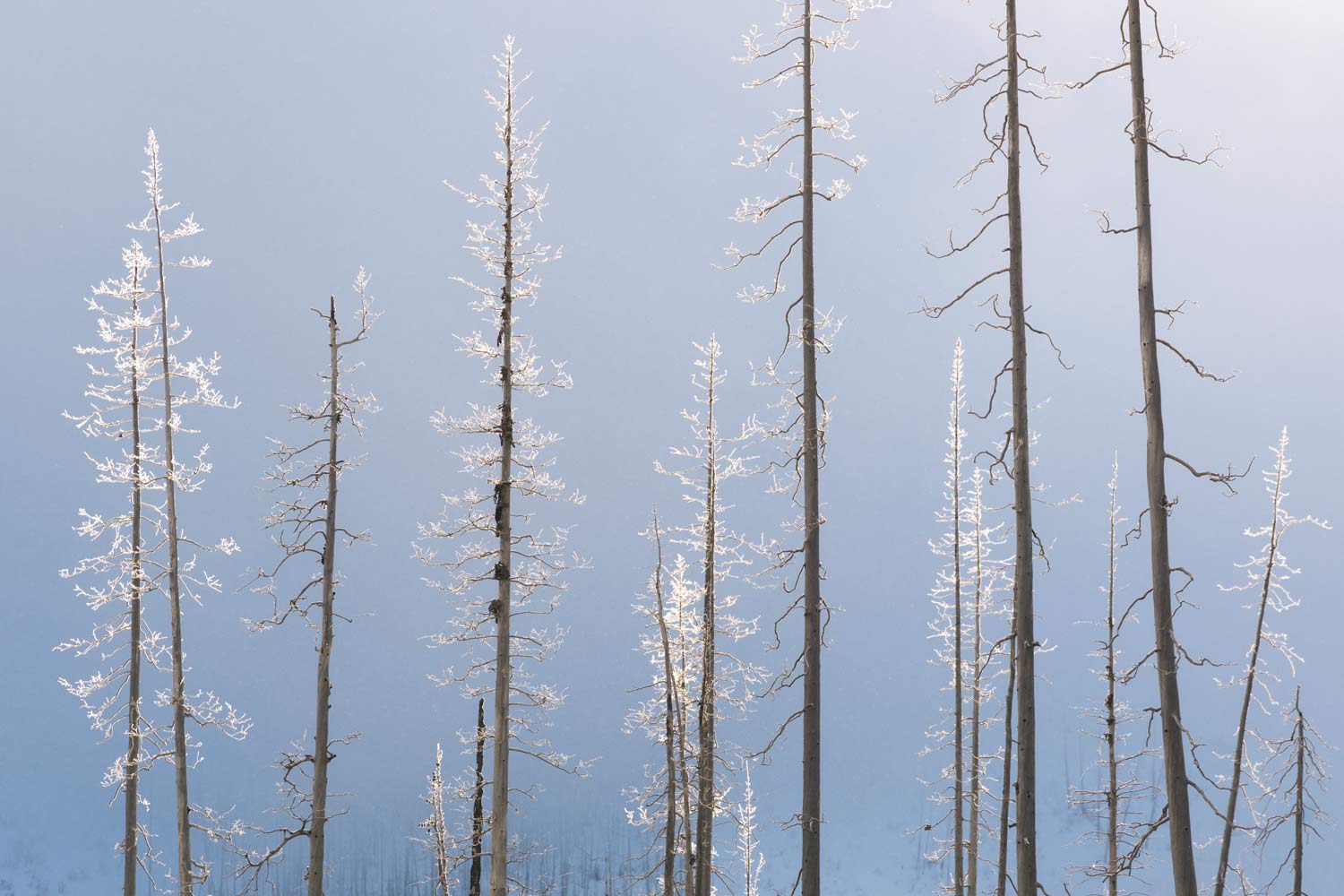
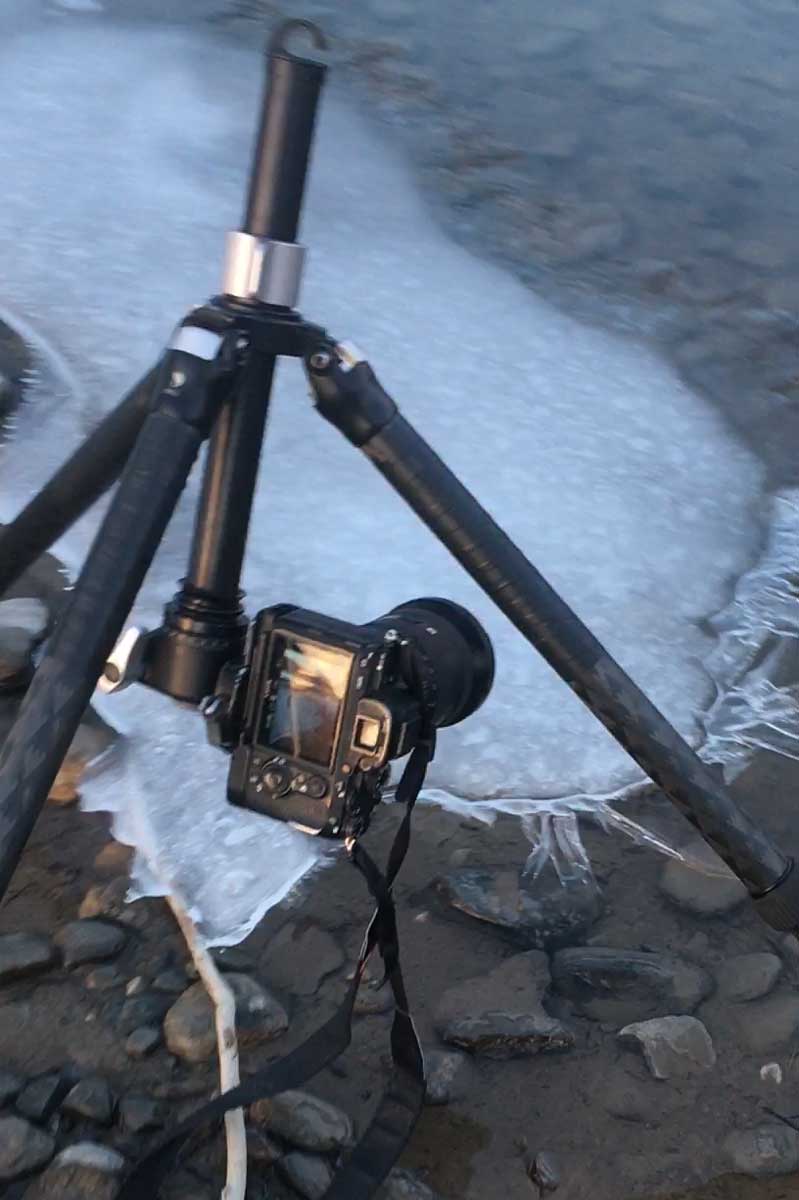

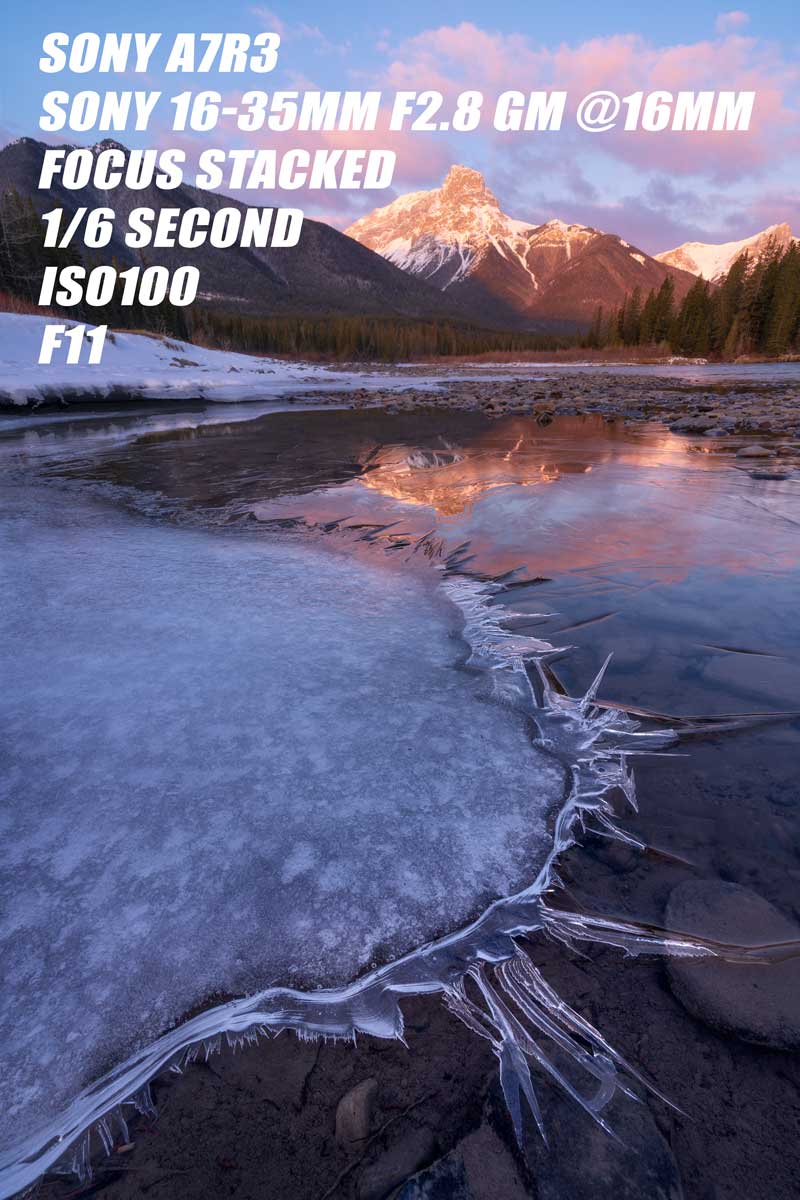
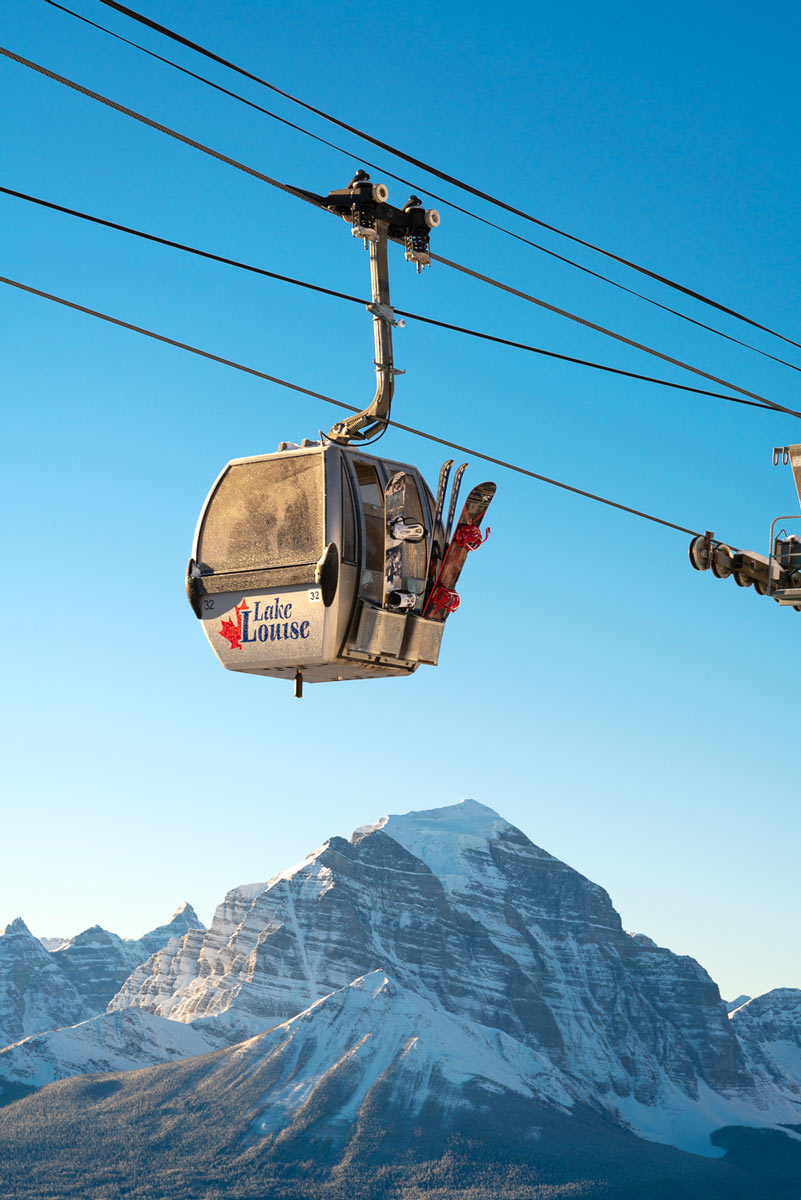
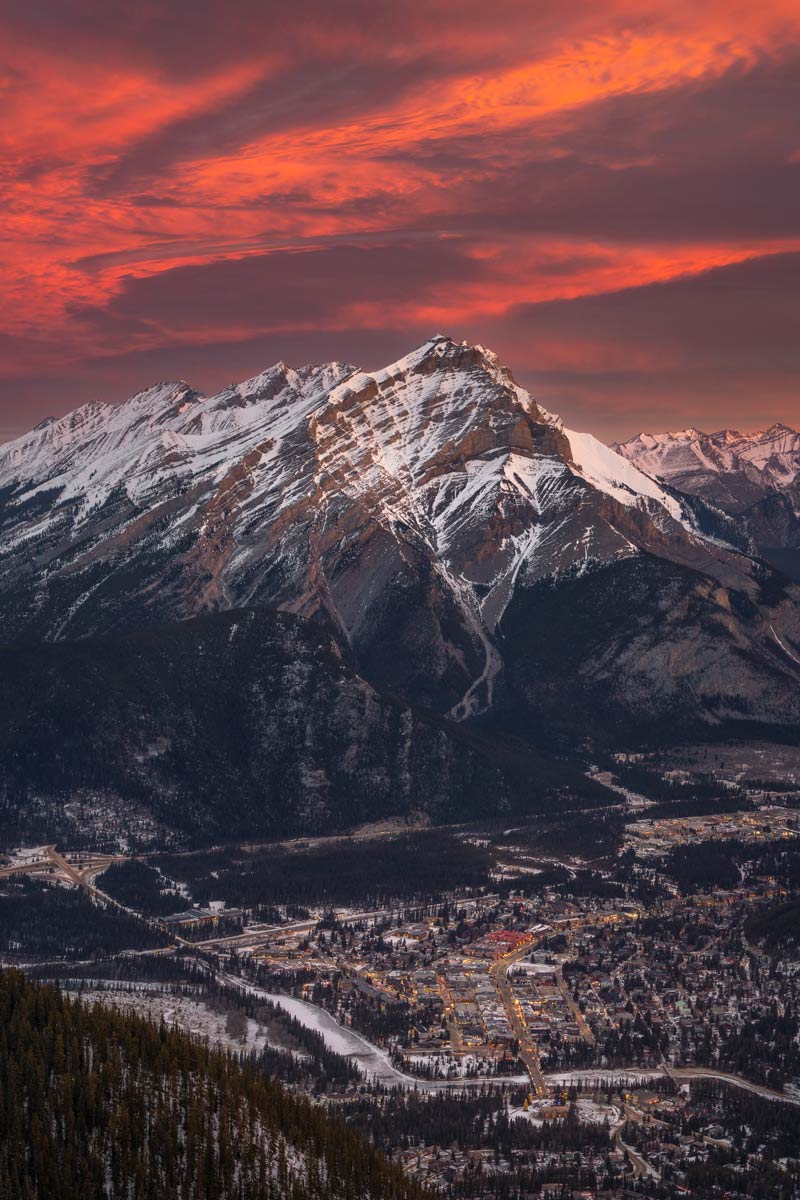

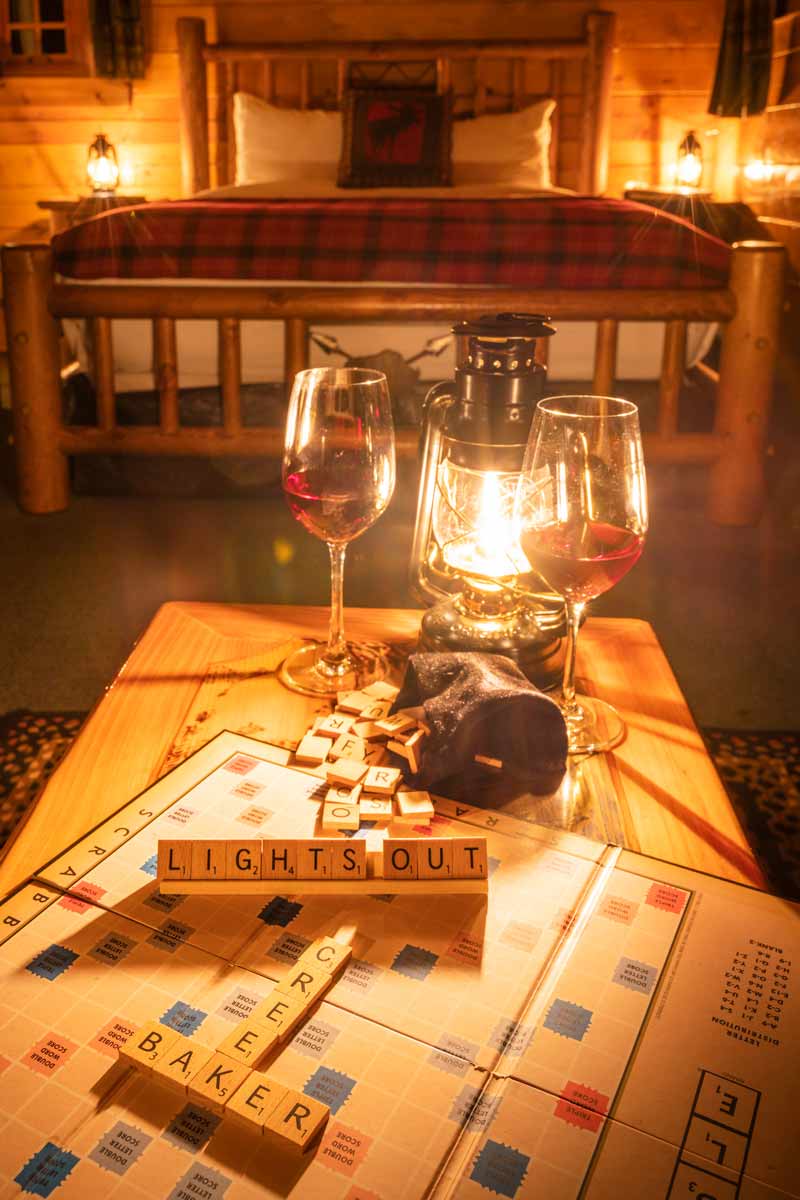

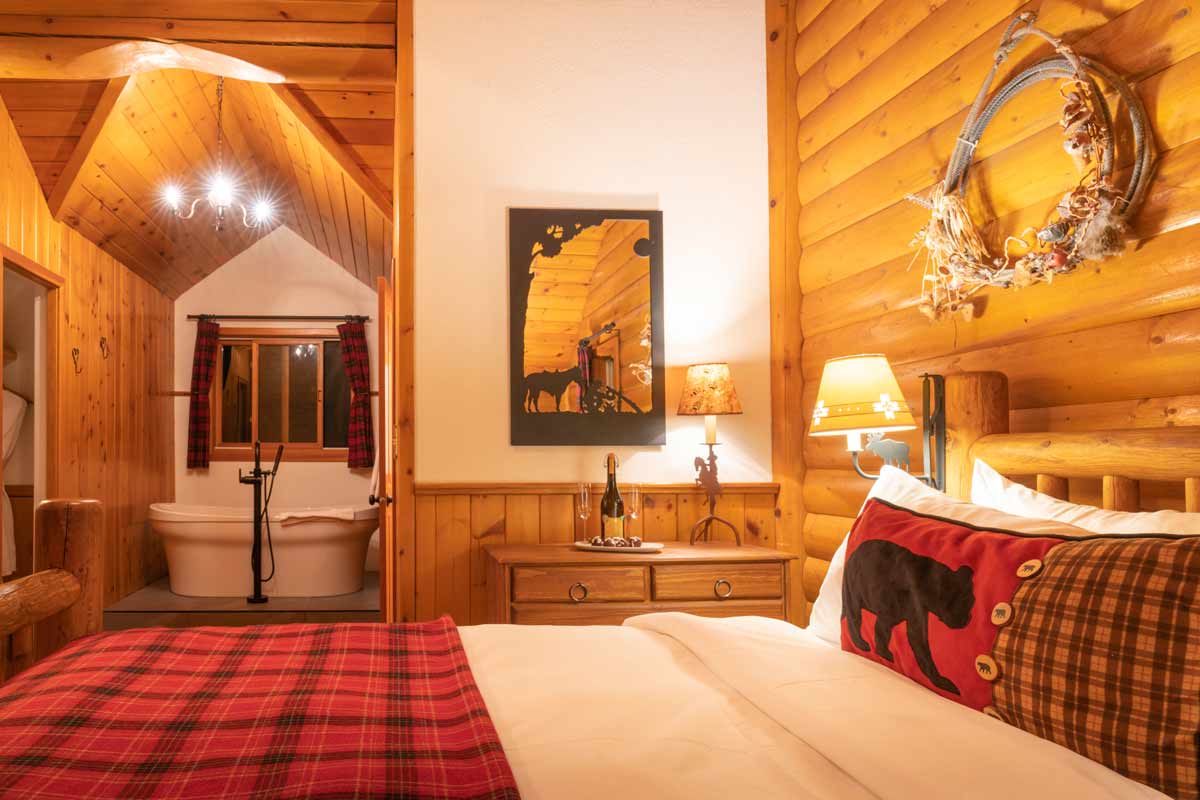
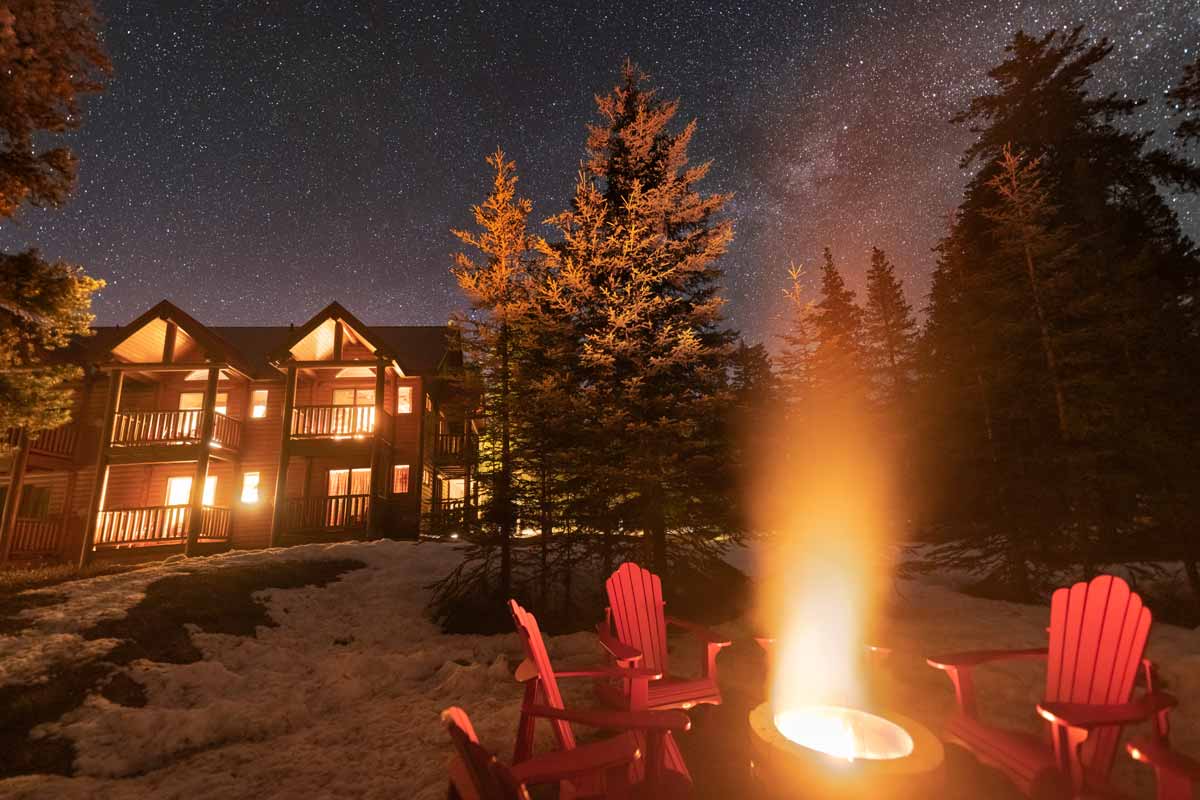
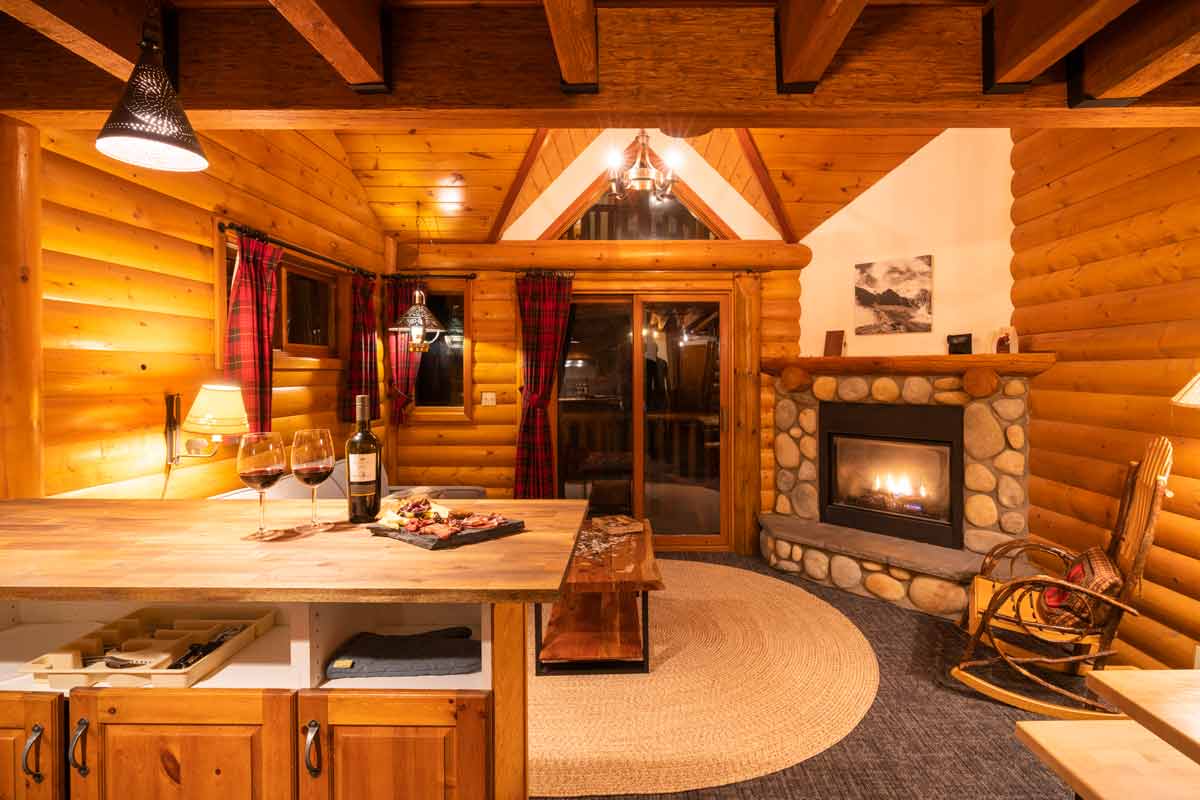
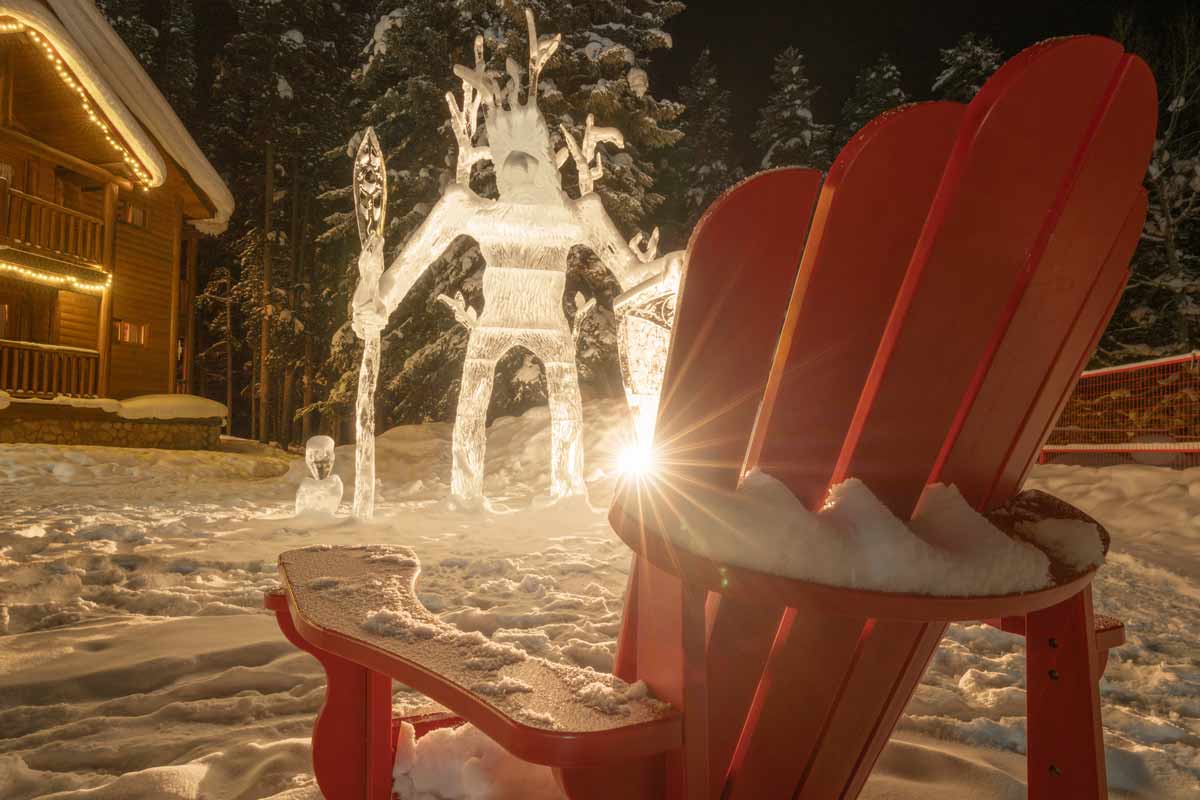
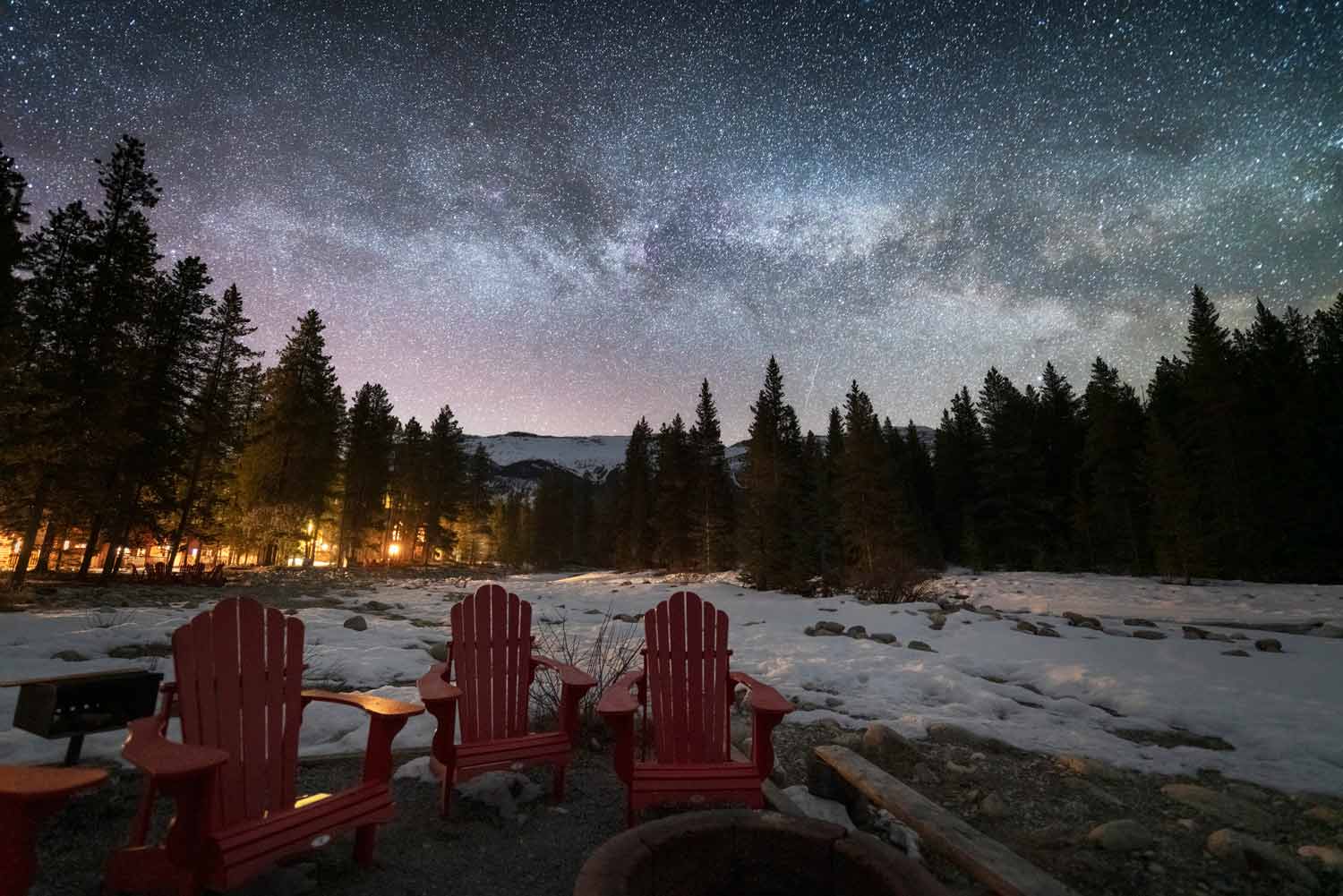

Nick,
I really enjoy reading your Banff winter photography guide and your beautiful photos.
I would definitely want to experience this winter. Looks like first week in November will be best.
Winnie
Hi Winnie, thank you! I’m looking into offering a trip this November so keep an eye out for that!